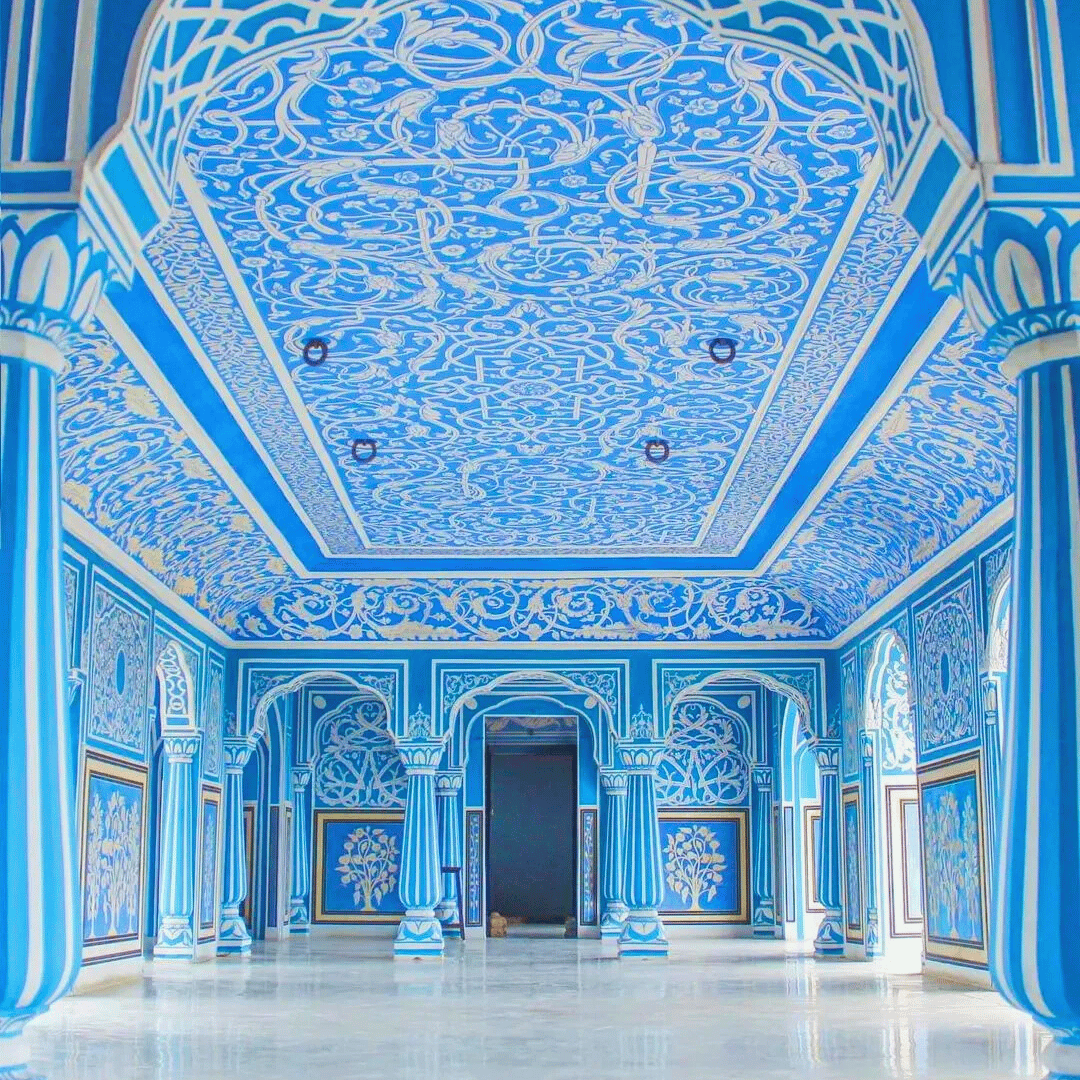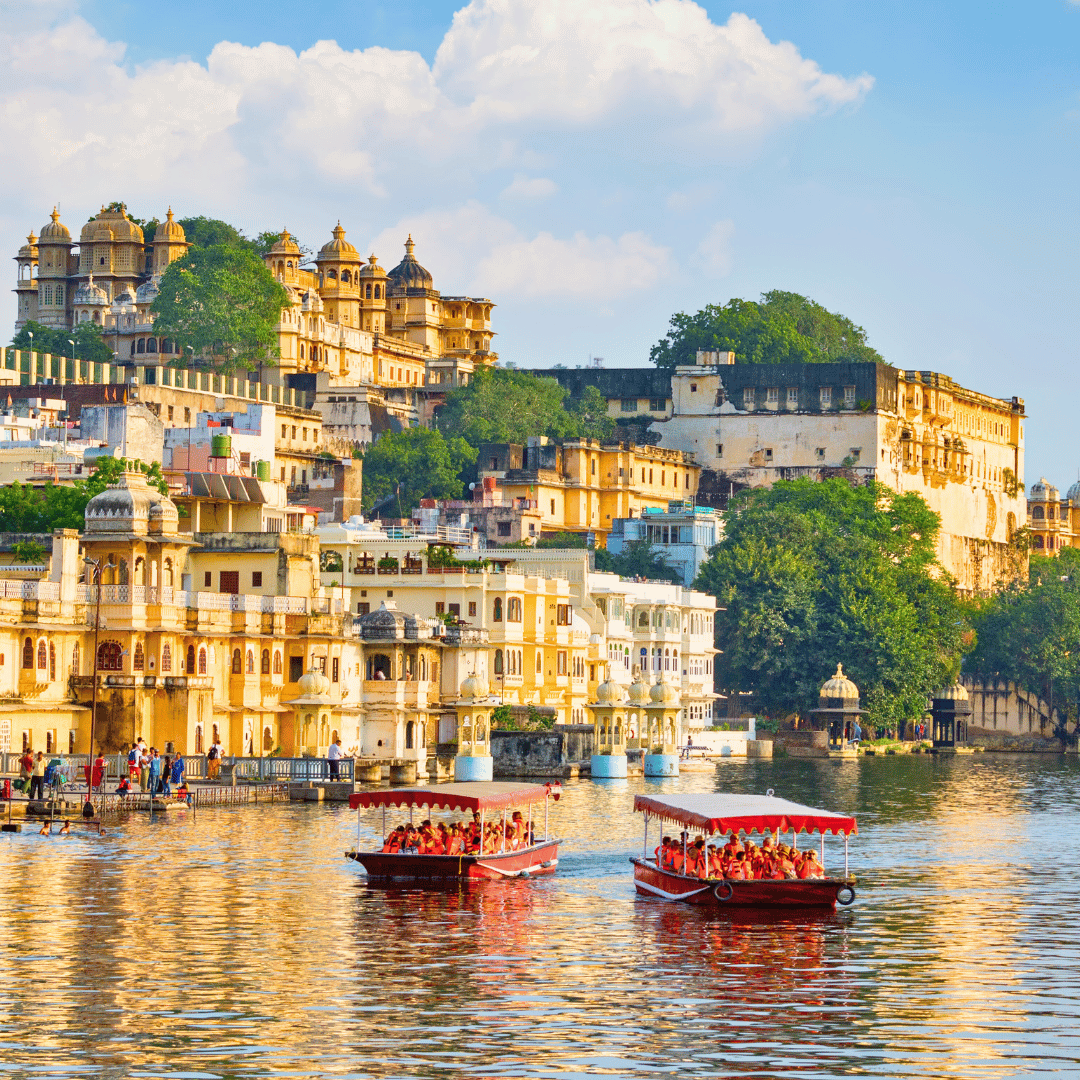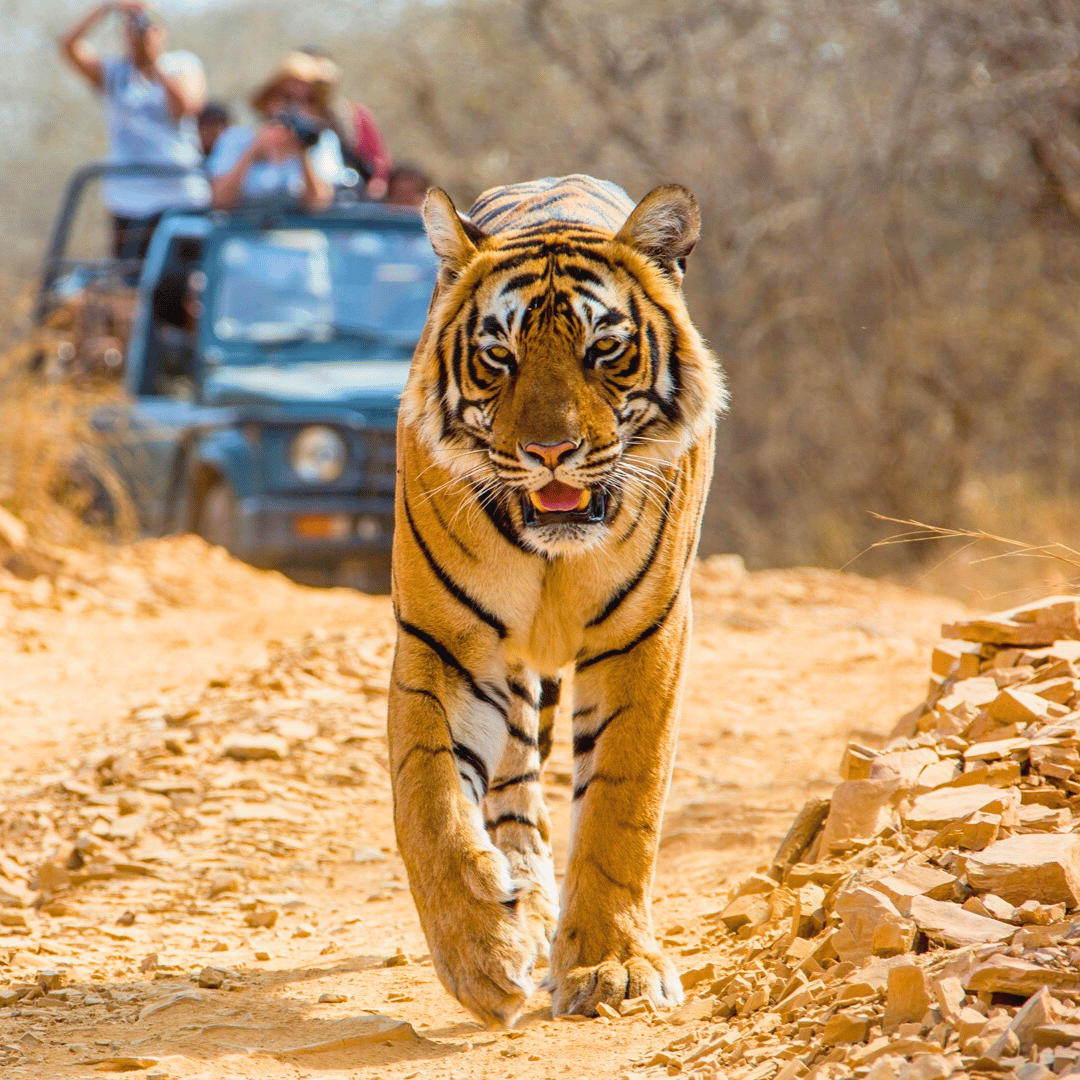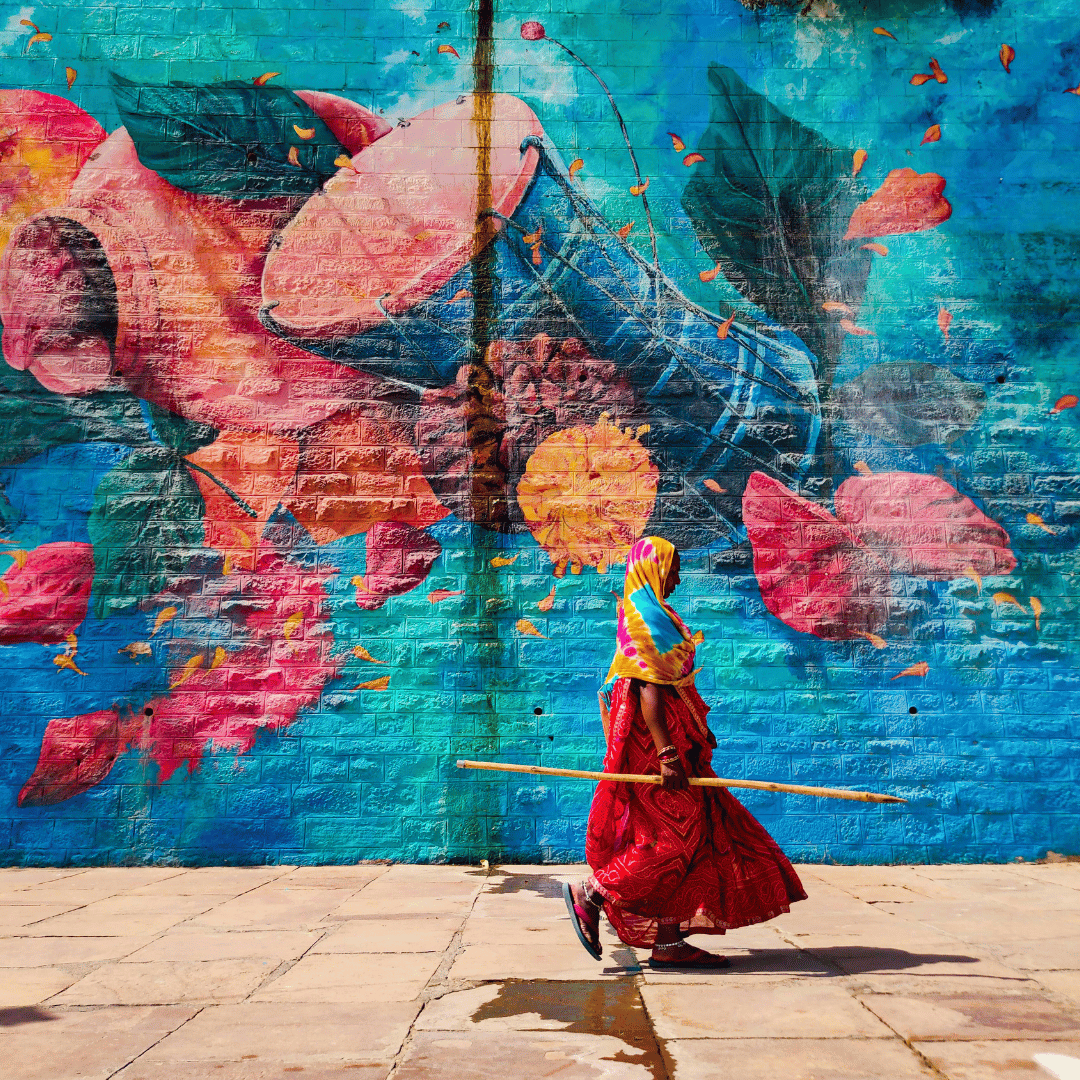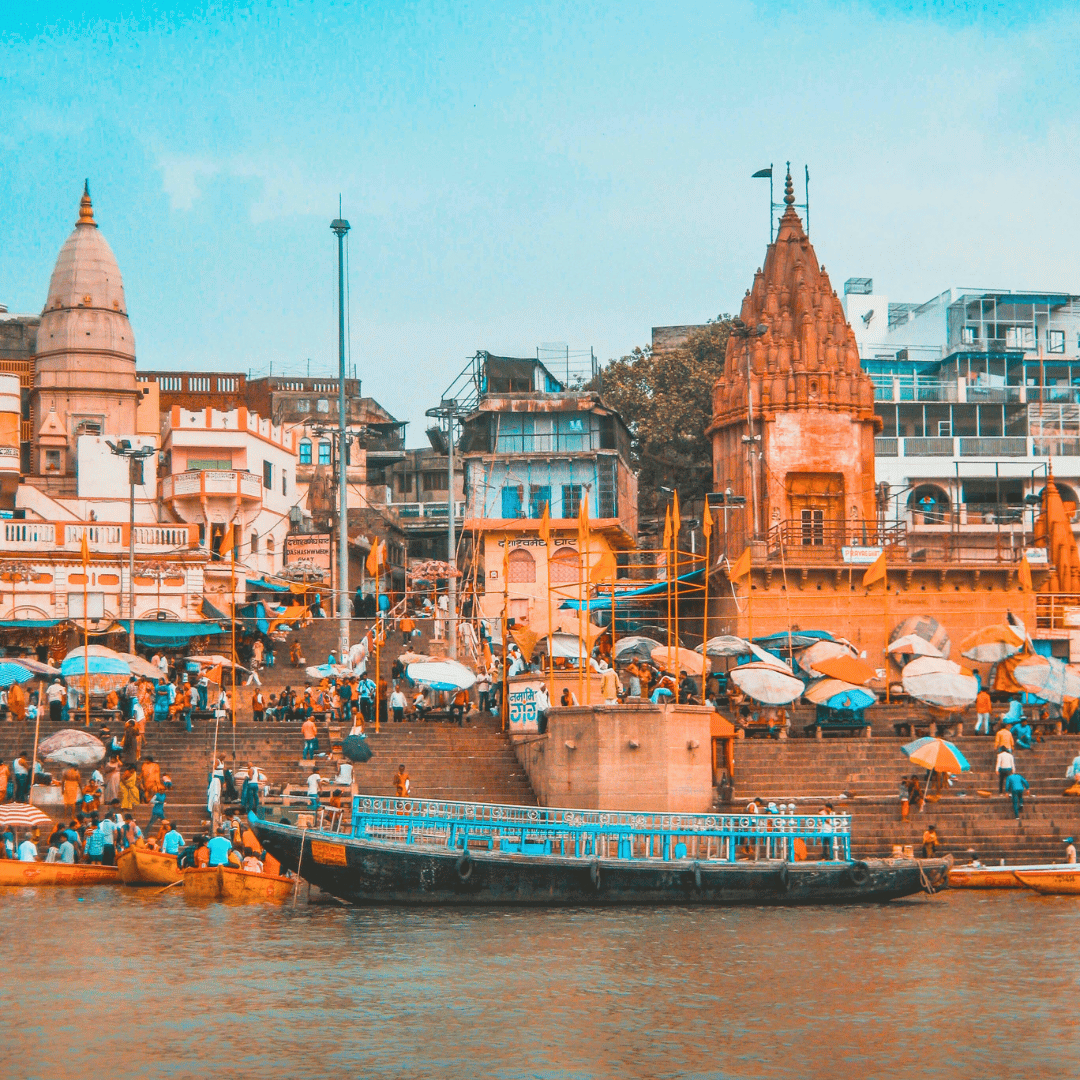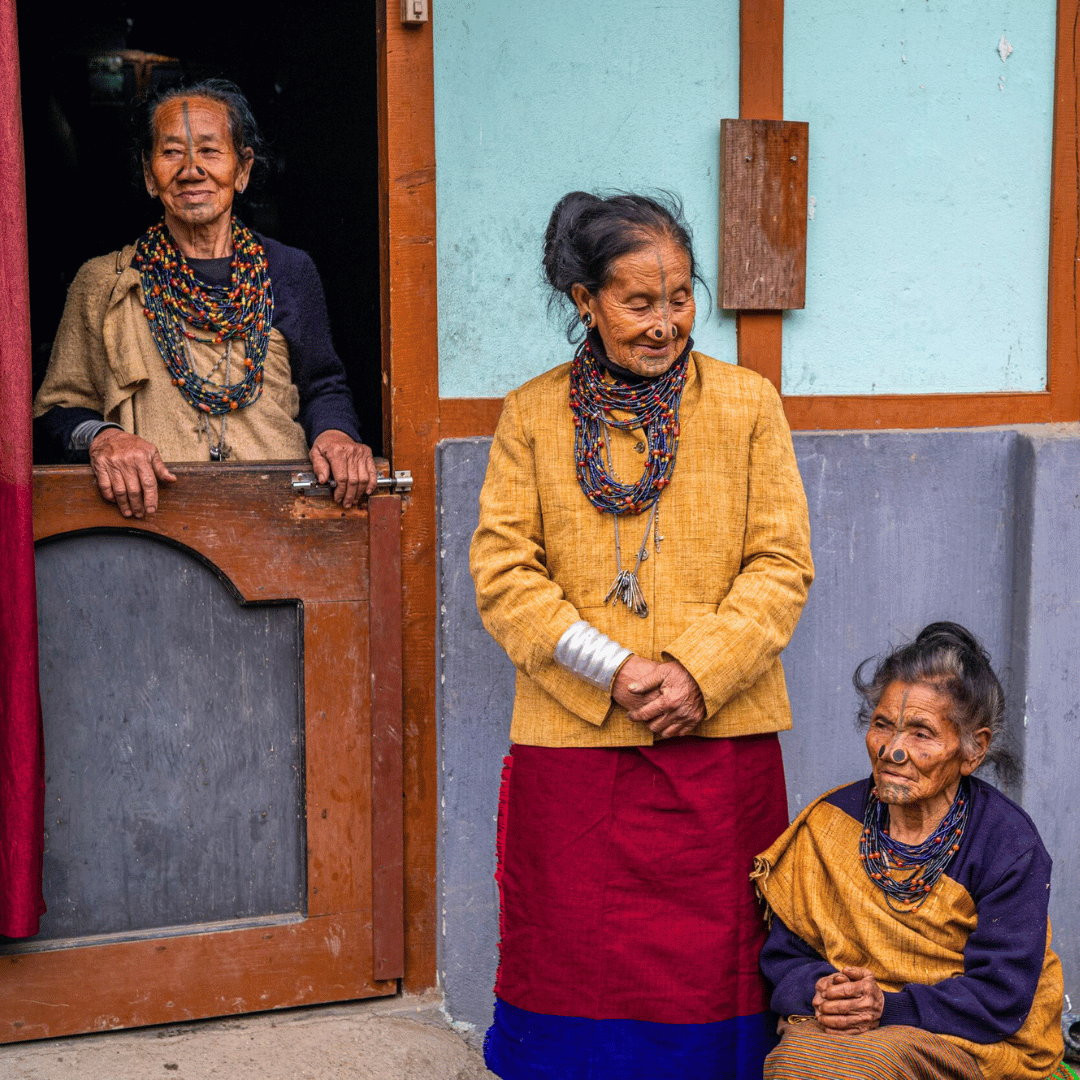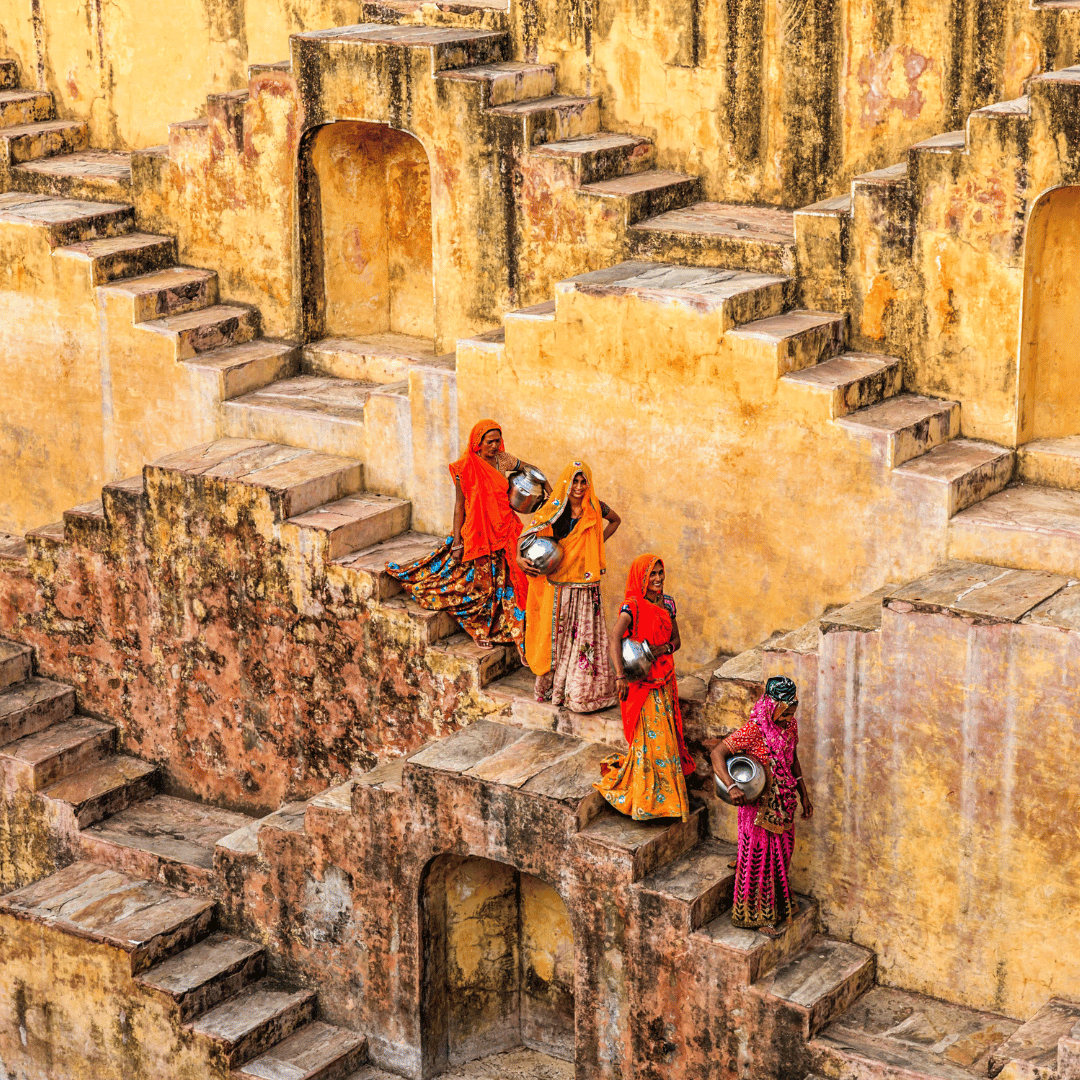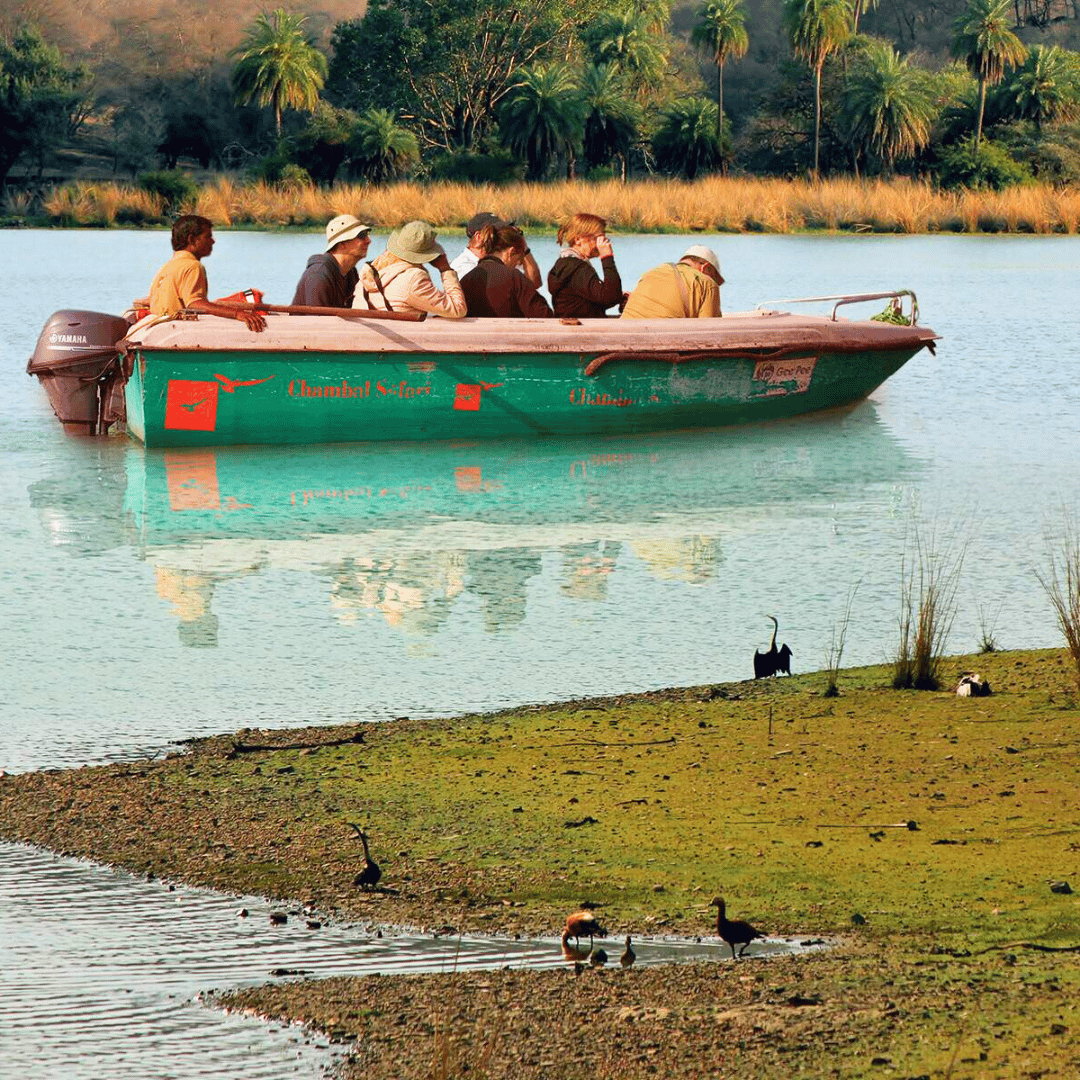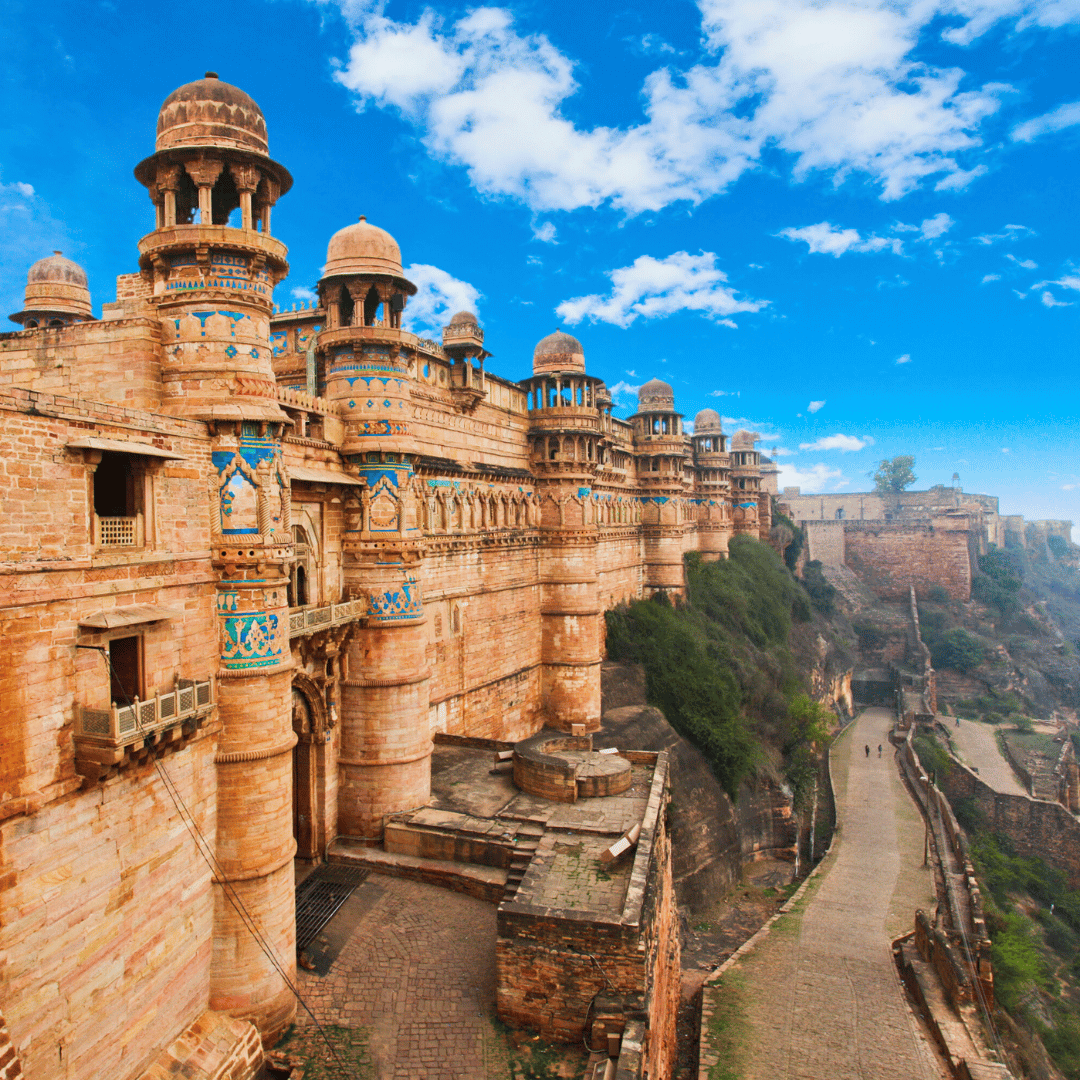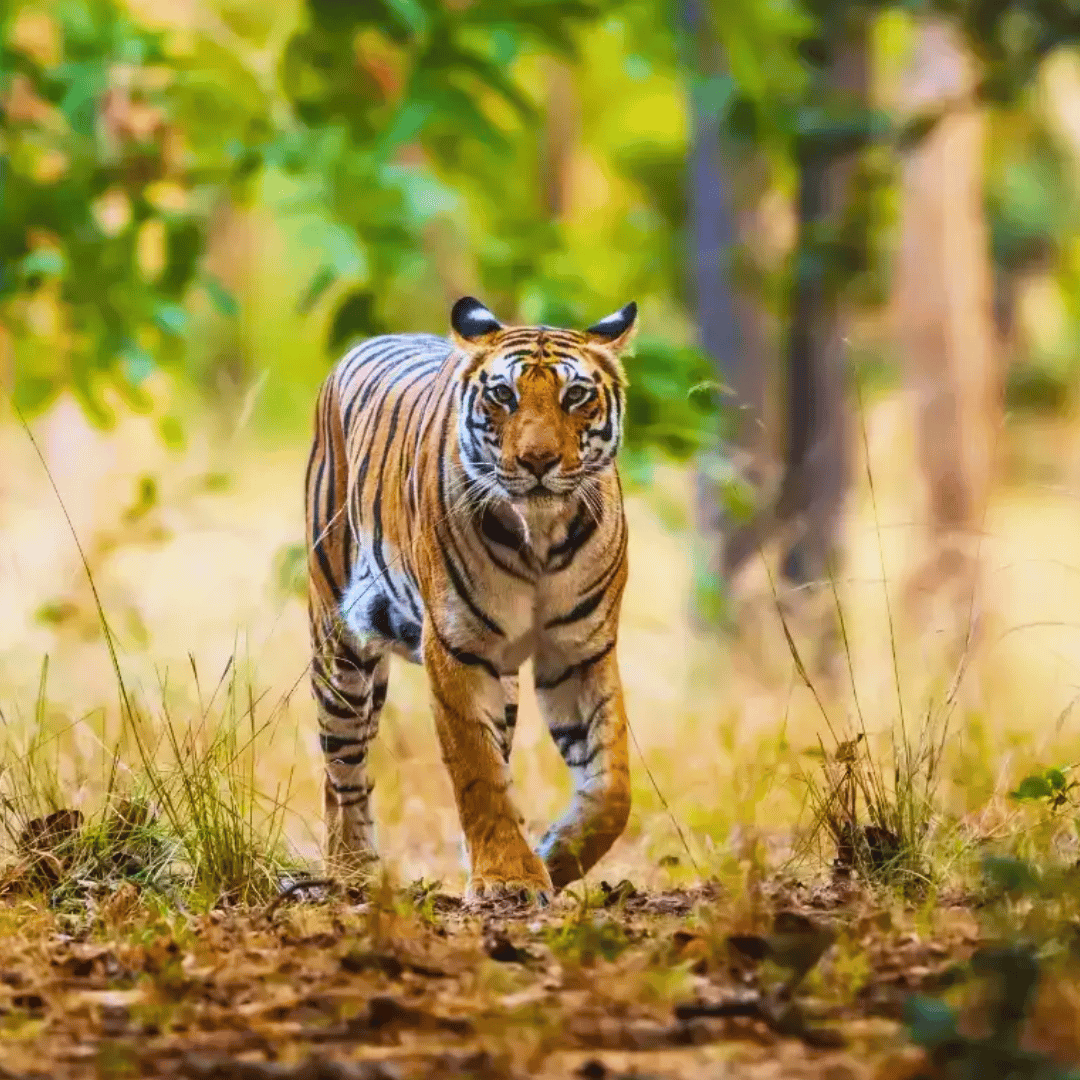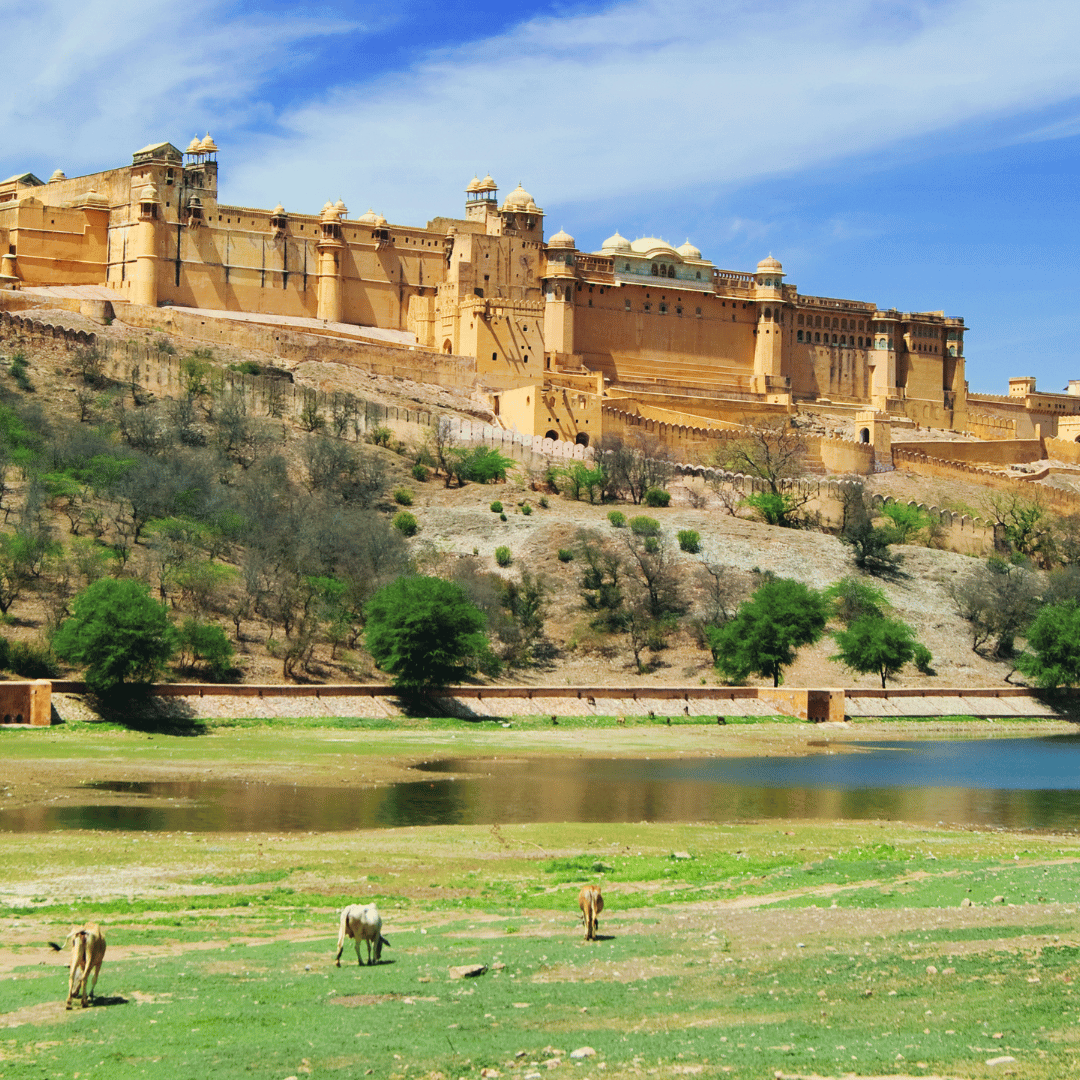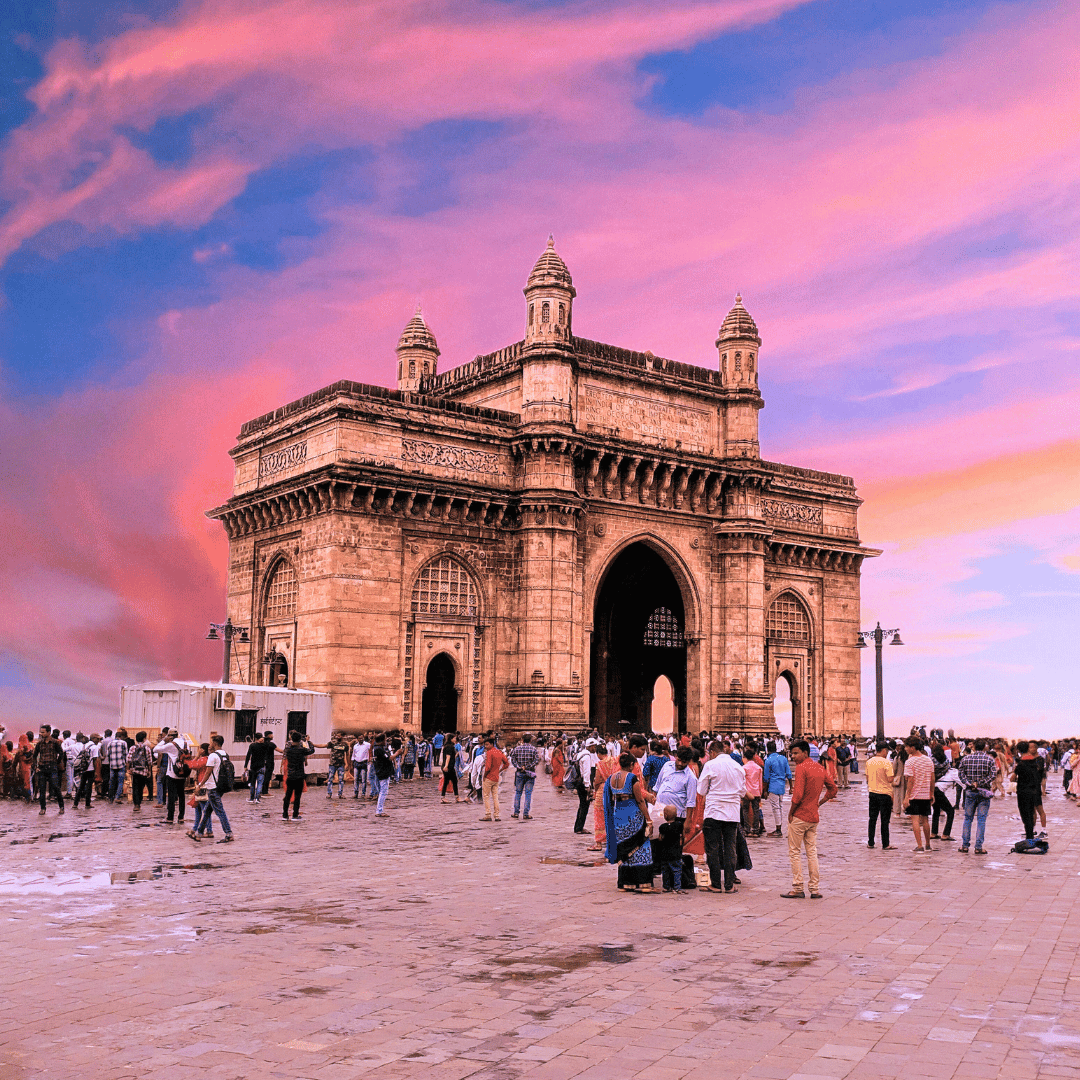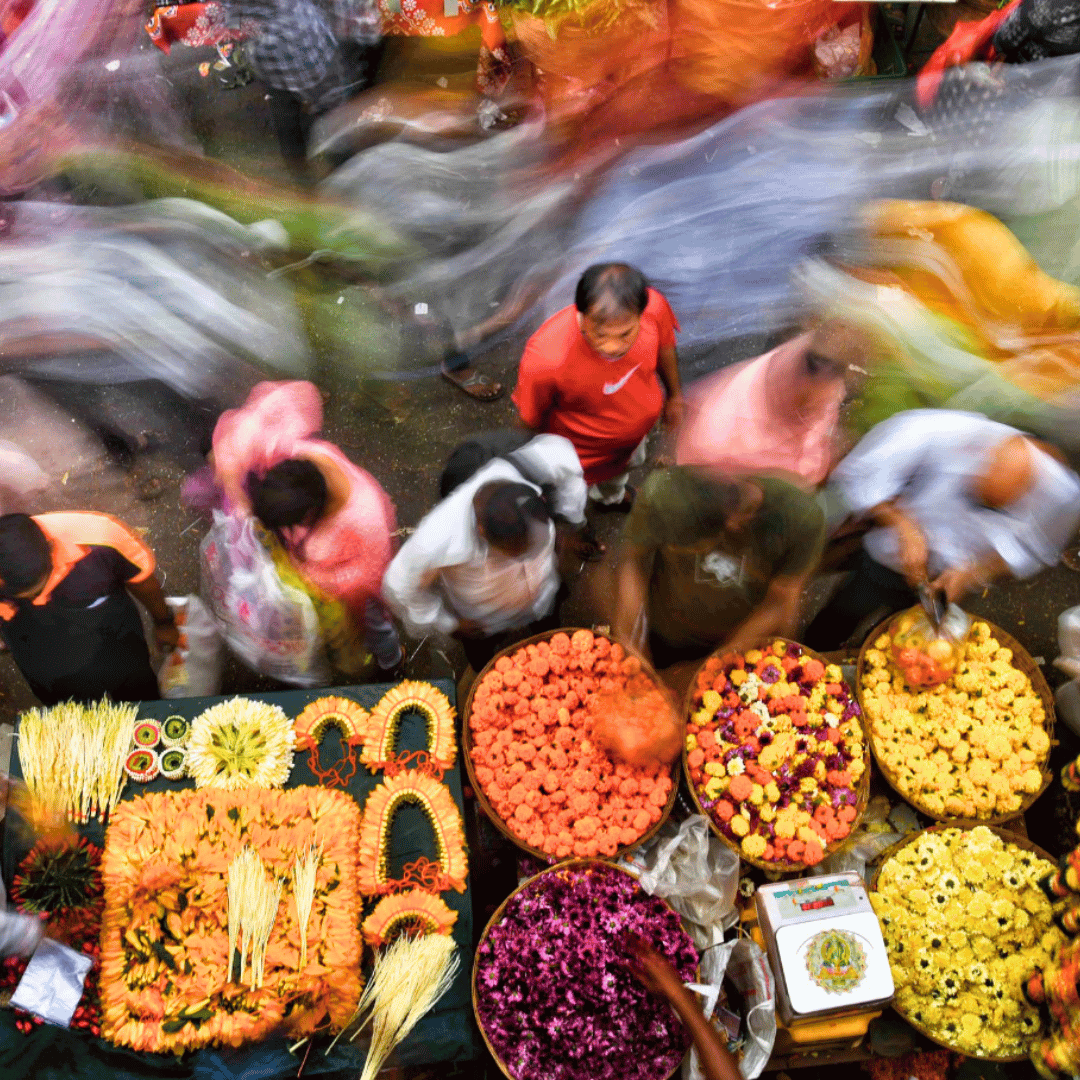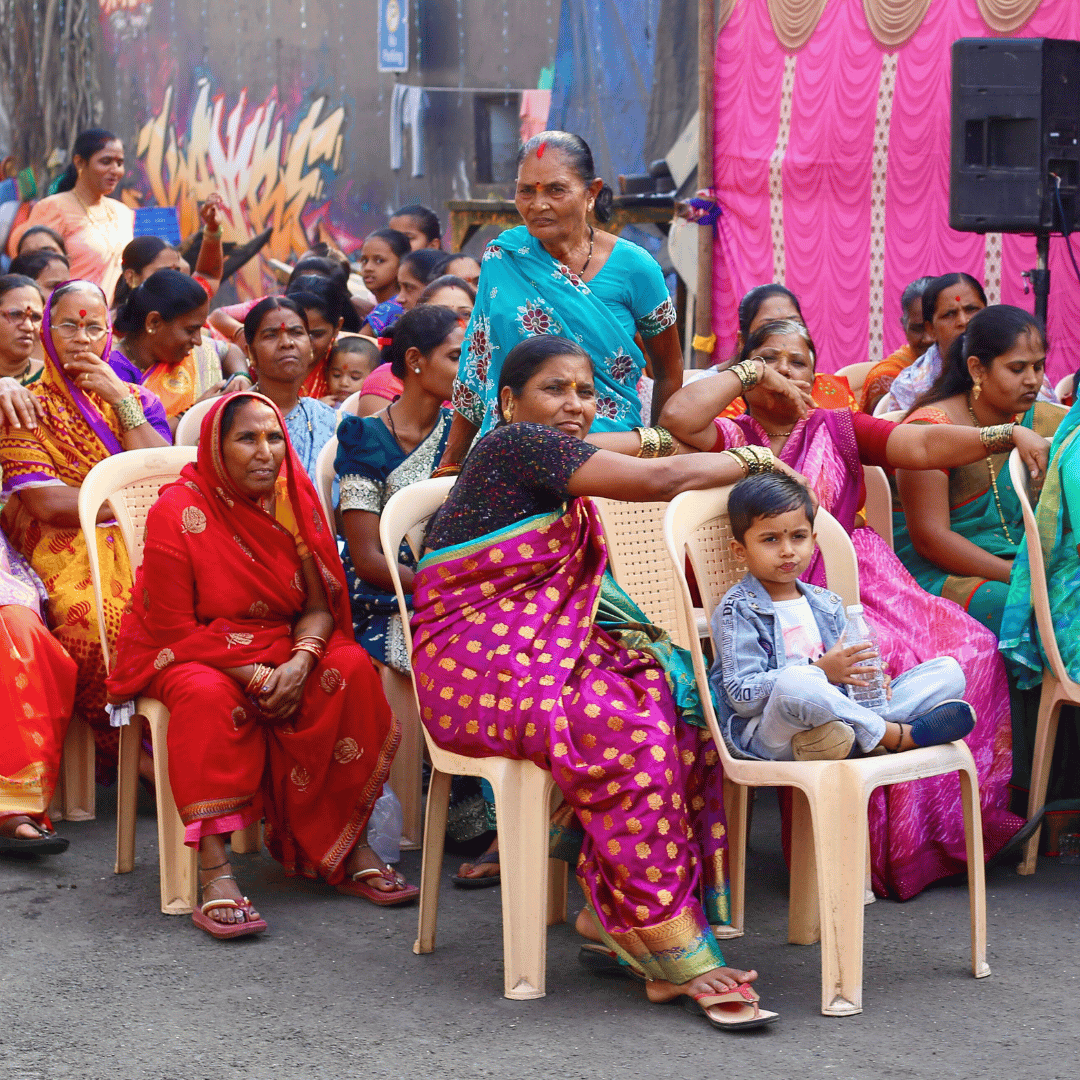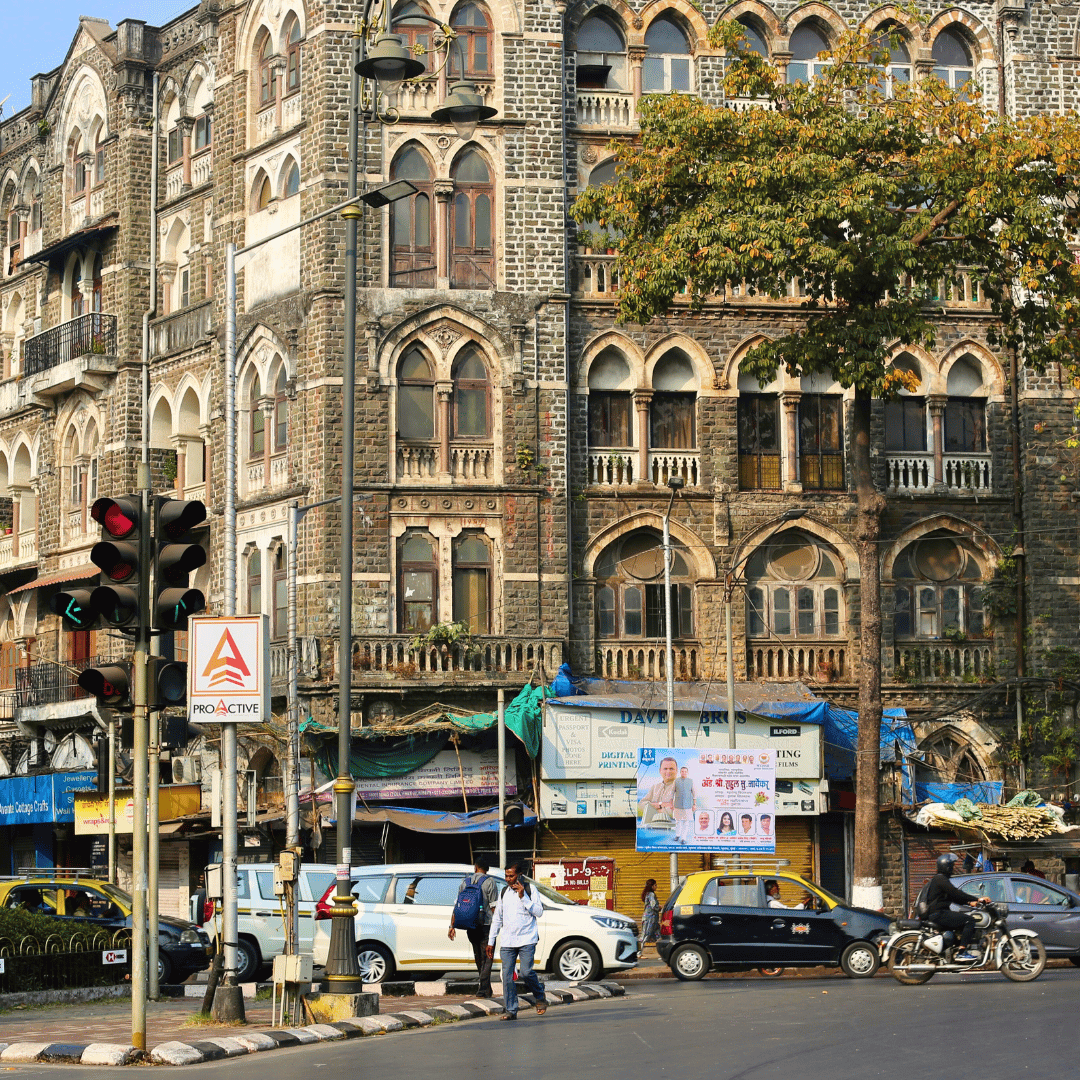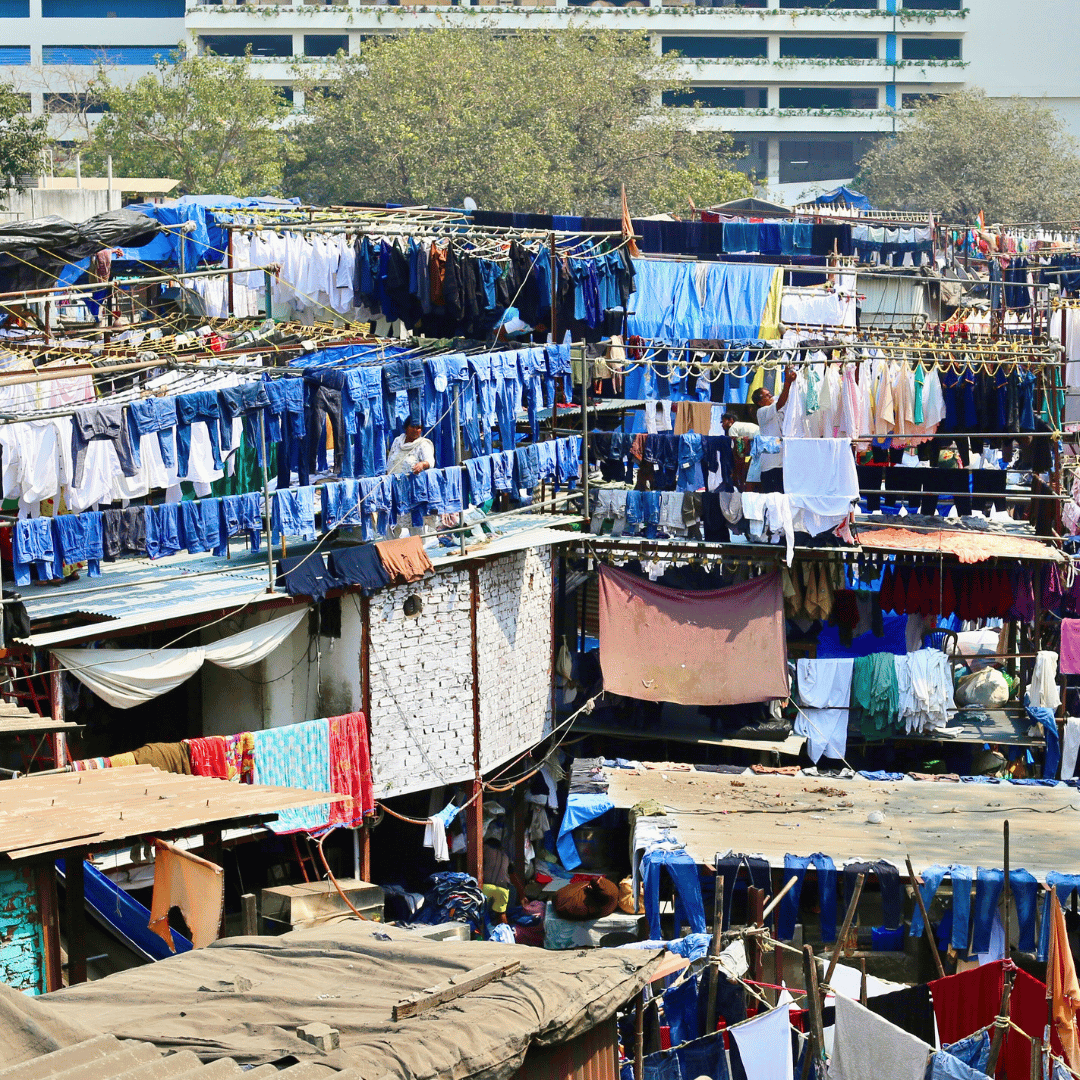
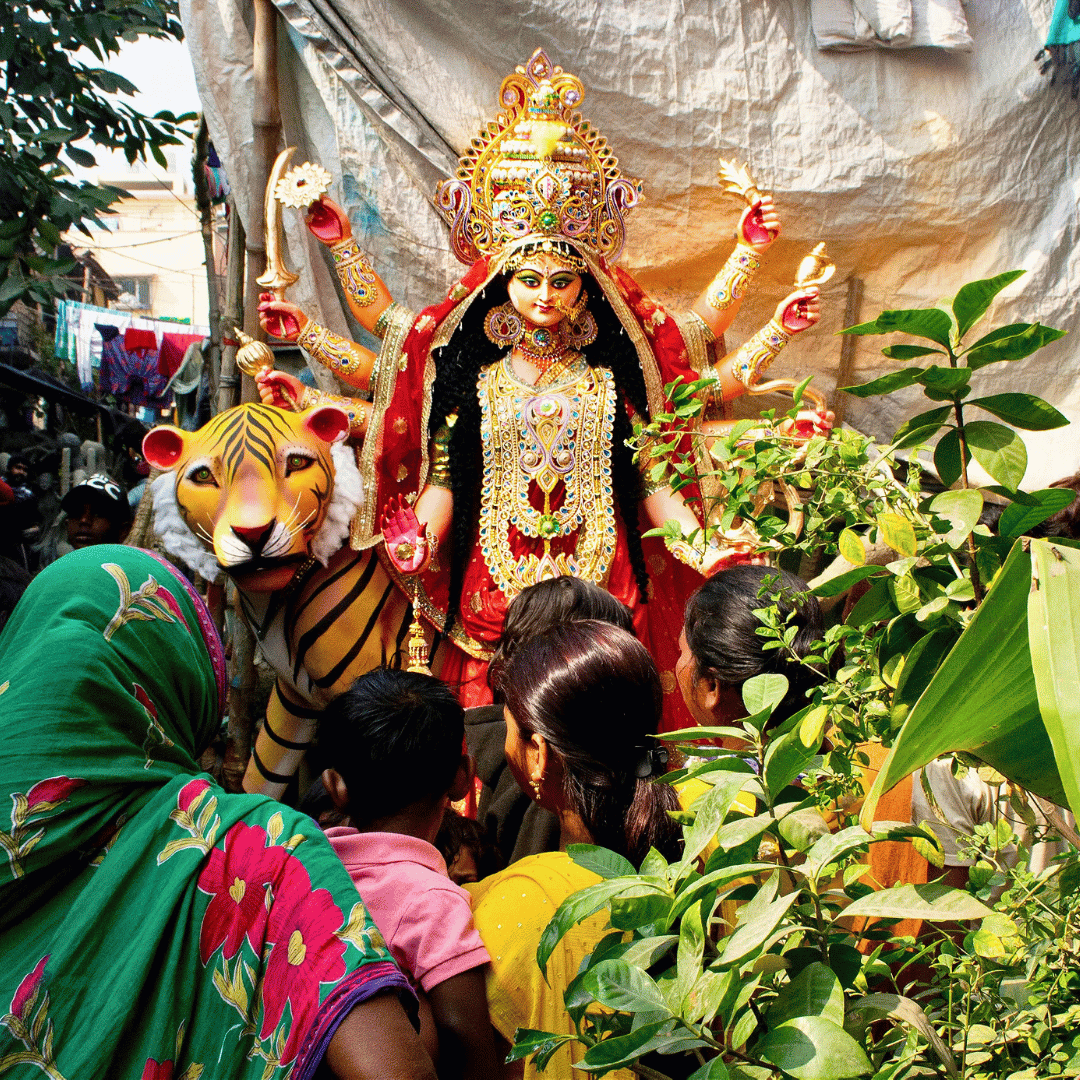
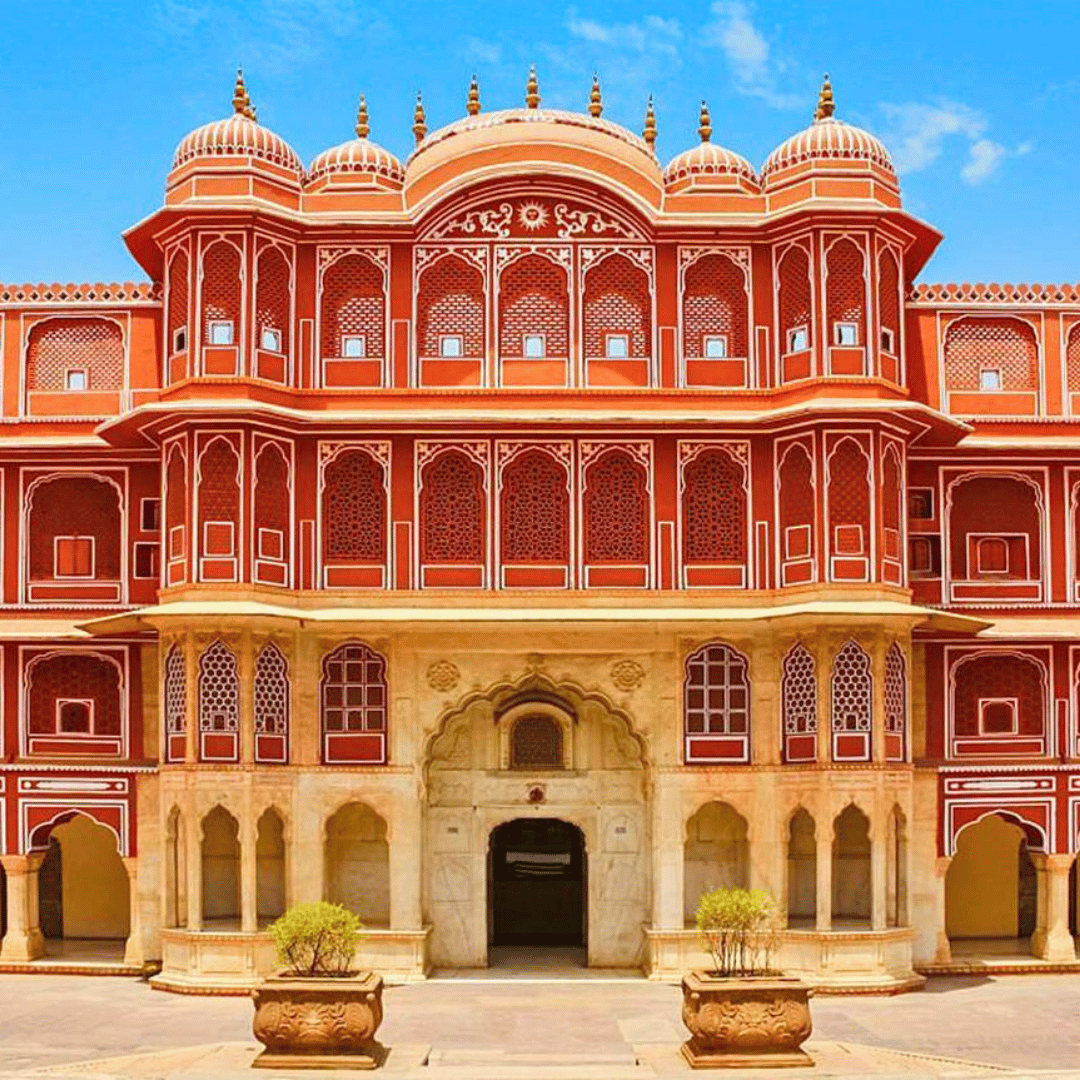
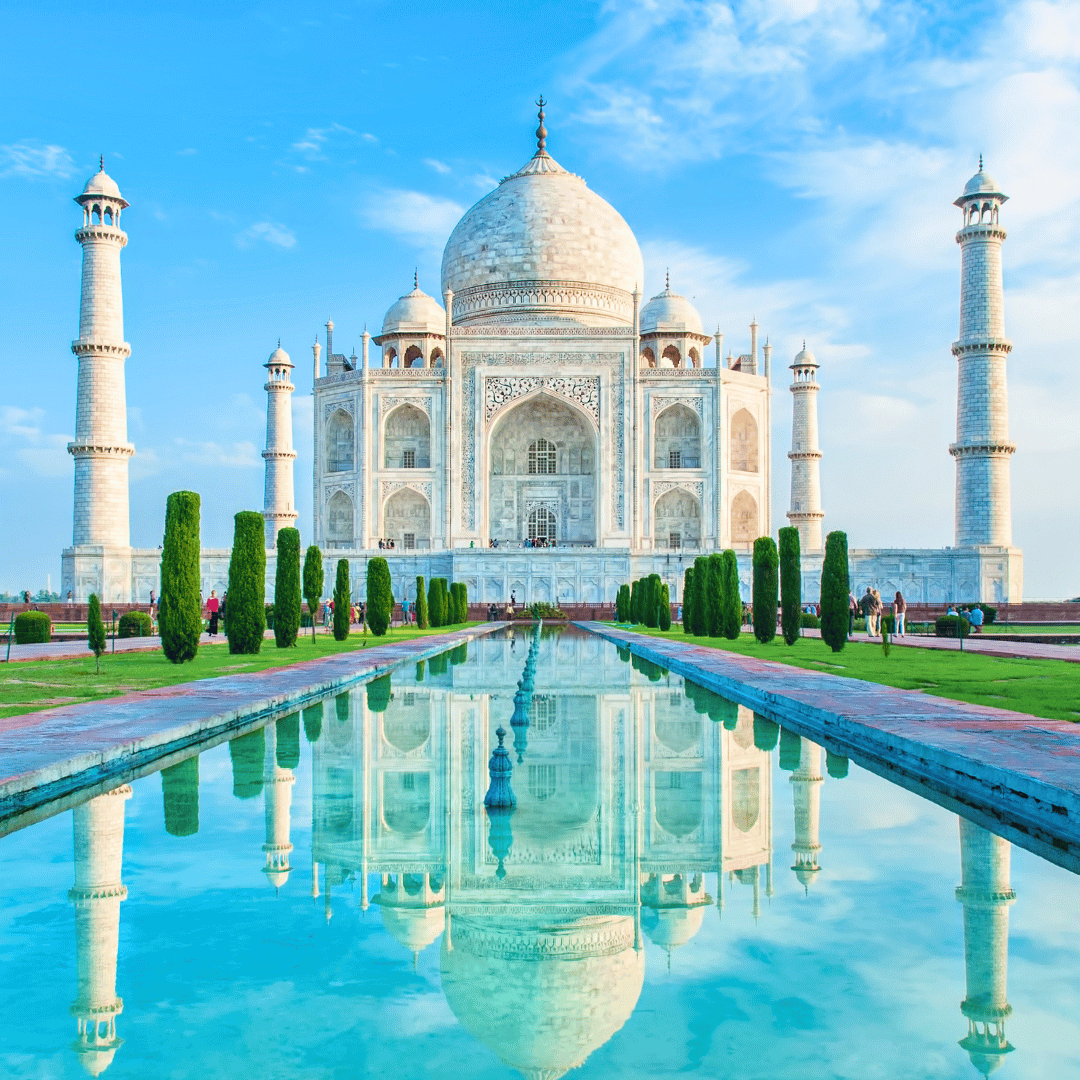
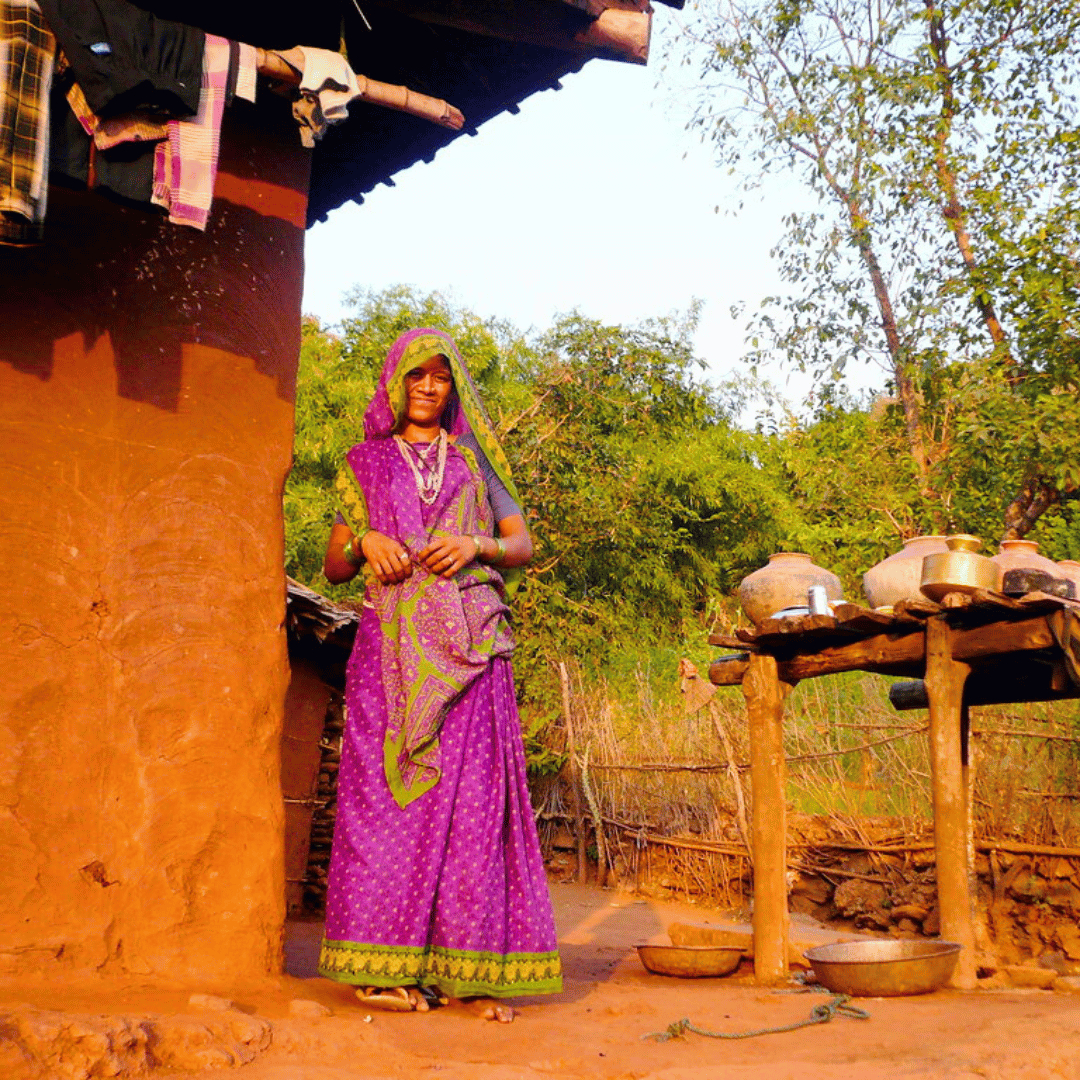

16 Days - The Story Of Indian History
From $7200.00 Per Person
Mumbai - Bhuj - Dholavira - Utelia - Lothal - Delhi - Kurukshetra - Agra - Jaipur - Kolkata - Lucknow
Travel through 5,000 years of Indian history on this 16-day journey that follows a thoughtfully arranged historical sequence. Beginning in Mumbai, the tour travels through the ancient Harappan sites of Dholavira and Lothal, explores the princely town of Bhuj, and visits the Indo-Saracenic palaces of Utelia. From there, it continues to Delhi, Kurukshetra, Agra, Jaipur, Kolkata and Lucknow, tracing the arc of Indian civilisation from the Bronze Age through to colonial times. You'll encounter the ruins of the Indus Valley civilisation, early Buddhist influences, and the remains of Mauryan and Gupta-era cities. Later stages focus on the architectural legacy of the Mughals, the politics of post-Mughal regional powers, and the impact of European colonisation. At Kurukshetra, you'll explore a site of myth and epic literature, while in Lucknow and Kolkata, the colonial layers of British rule come into view. With expert guides throughout, the itinerary links archaeological sites, historic towns, palaces and forts with daily life, offering a mix of historical depth and present-day India. There’s time to wander old bazaars, try local foods, and visit iconic sites such as the Taj Mahal and Jaipur’s palaces. This journey is ideal for history lovers and travellers seeking a deeper understanding of India’s long and layered past.
Trip Highlights
Get the rare opportunity to explore two major Indus Valley archaeological sites of the Harappan era, Dholavira and Lothal, offering insight into one of the world’s oldest urban civilisations
Explore Kurukshetra, the legendary battlefield of the Mahabharata and a site of early Vedic learning and deep cultural resonance in Indian history
Walk through the former centres of British administration and culture at Kolkata and Lucknow, exploring colonial architecture, political history and the layered legacy of European rule
16 Days - The Story Of Indian History
From $7200.00 Per Person
Mumbai - Bhuj - Dholavira - Utelia - Lothal - Delhi - Kurukshetra - Agra - Jaipur - Kolkata - Lucknow
Travel through 5,000 years of Indian history on this 16-day journey that follows a thoughtfully arranged historical sequence. Beginning in Mumbai, the tour travels through the ancient Harappan sites of Dholavira and Lothal, explores the princely town of Bhuj, and visits the Indo-Saracenic palaces of Utelia. From there, it continues to Delhi, Kurukshetra, Agra, Jaipur, Kolkata and Lucknow, tracing the arc of Indian civilisation from the Bronze Age through to colonial times. You'll encounter the ruins of the Indus Valley civilisation, early Buddhist influences, and the remains of Mauryan and Gupta-era cities. Later stages focus on the architectural legacy of the Mughals, the politics of post-Mughal regional powers, and the impact of European colonisation. At Kurukshetra, you'll explore a site of myth and epic literature, while in Lucknow and Kolkata, the colonial layers of British rule come into view. With expert guides throughout, the itinerary links archaeological sites, historic towns, palaces and forts with daily life, offering a mix of historical depth and present-day India. There’s time to wander old bazaars, try local foods, and visit iconic sites such as the Taj Mahal and Jaipur’s palaces. This journey is ideal for history lovers and travellers seeking a deeper understanding of India’s long and layered past.
Trip Highlights
Get the rare opportunity to explore two major Indus Valley archaeological sites of the Harappan era, Dholavira and Lothal, offering insight into one of the world’s oldest urban civilisations
Explore Kurukshetra, the legendary battlefield of the Mahabharata and a site of early Vedic learning and deep cultural resonance in Indian history
Walk through the former centres of British administration and culture at Kolkata and Lucknow, exploring colonial architecture, political history and the layered legacy of European rule
Itinerary
-
Welcome to India! You will be met on arrival at Mumbai Airport and transferred to your hotel for an overnight stay. Depending on your arrival time, there may be an opportunity to begin exploring the city.
Mumbai is India’s financial and entertainment capital, and a dynamic introduction to the country - home to grand colonial buildings, lively street life, and a distinctive coastal atmosphere.
If time permits, you might visit the Gateway of India, a key landmark overlooking the Arabian Sea, or take a walk along the famous Marine Drive, especially atmospheric in the evening. The nearby Kala Ghoda precinct is known for its art galleries, cafés and heritage buildings, while Colaba Causeway offers plenty of street shopping and local snacks. You could also explore the Chhatrapati Shivaji Maharaj Vastu Sangrahalaya (formerly Prince of Wales Museum), which houses impressive collections of Indian art and artefacts.
Alternatively, enjoy a relaxed start to your travels with a meal at one of the city’s well-known restaurants, where Mumbai’s diverse culinary traditions - from Parsi cafés to regional Indian cuisines - are on full display.
-
After a relaxed morning, you’ll be transferred to the airport for your flight to Bhuj. On arrival, you’ll be met and taken to your hotel for check-in and time to settle in.
Bhuj, the cultural heart of the Kutch region in Gujarat, became the capital of the Jadeja Rajputs in 1539 and has remained the area’s key centre ever since. The town takes its name from the nearby Bhujia Hill, crowned by a historic fortress that once guarded the city. Enclosed by old city walls and dotted with narrow, meandering lanes, Bhuj is a rewarding place to explore on foot. You’ll find elaborate gateways, faded palaces, traditional temples and a rich sense of living history.
The region is particularly well known for its distinctive textile and craft traditions. While in Bhuj, you may wish to visit local bazaars and artisan workshops where you’ll see intricate embroidery, patchwork quilts, beadwork, leather goods and the unique ‘Rogan’ painting - an art form practised by only a handful of families in the area. Beyond its crafts, the broader Kutch region is also of archaeological importance, with several nearby sites linked to the ancient Indus Valley civilisation.
This visit provides a first glimpse into the layers of history, artistry and culture that define the journey ahead.
Harappan CultureThe earliest agrarian settlements in the Indian subcontinent date back to the 4th or 5th millennium BCE. These early farming communities practised relatively advanced agriculture for their time and maintained basic trade links with one another. Over time, these settlements expanded across the Indus plains, giving rise to one of the world’s first urban civilisations - the Indus Valley Civilisation, also known as the Harappan Culture.
By around 2500 BCE, the Harappan civilisation had reached its peak and became the most widespread of the ancient civilisations of its time. Major centres included Harappa, Mohenjodaro, Kalibangan, Lothal and Dholavira - likely regional capitals, each with well-developed civic planning. Across a vast geographical area, the civilisation displayed remarkable uniformity: cities were built on a grid system, bricks followed standard proportions, and a still-undeciphered script was used across settlements.
The decline of the Harappan Culture around 1700 BCE remains somewhat uncertain. It was likely a combination of factors - environmental shifts, changing river systems, and economic disruptions - that gradually led to the collapse of individual urban centres. Many inhabitants appear to have moved eastward or into more rural settings, where traces of a late, declining Harappan culture can still be found.
-
Today you’ll embark on a full-day excursion to Dholavira, one of the most remarkable archaeological sites linked to the Harappan Civilisation. Situated on the isolated Khadir Island in the Great Rann of Kutch, the journey takes around four hours each way and passes through stark desert landscapes, salt flats and remote villages - a dramatic setting for a city that once thrived in one of the world’s earliest urban civilisations.
Discovered in 1967-68, Dholavira is one of the five largest Harappan sites and offers an exceptional view of ancient city planning. Excavations have revealed a highly structured urban layout with distinct zones, monumental gateways, wide roads and large public reservoirs. The settlement was cleverly divided into a citadel, middle town and lower town, each enclosed by walls built from stone rather than mud bricks - a unique feature among Harappan sites. The sophistication of its water management is particularly striking: massive reservoirs, channels, dams and underground drains allowed the city to harvest and conserve water year-round in an otherwise arid environment. This system, based on harvesting both rainwater and seasonal streams, remains one of the earliest examples of hydraulic engineering in the world.
In addition to its urban design, Dholavira has yielded an extraordinary collection of artefacts that provide insight into the lives of its inhabitants. Finds include bangles made of shell and semi-precious stones, terracotta figurines, copper tools, weights and measures, and etched seals used in trade. The remains of large warehouses, workshops and a unique signboard bearing Harappan script suggest that Dholavira was an important hub in a network of trade routes that stretched across the subcontinent and possibly beyond.
A walk through the site gives a strong sense of scale and ingenuity, where one can imagine a time when this now-barren region supported a thriving urban population. For those interested in archaeology, engineering, or ancient cultures, Dholavira offers a rare and deeply engaging window into a civilisation that flourished over four millennia ago.
-
Today you’ll explore the historic city of Bhuj before heading out on a drive through the rugged countryside of Kutch. Enclosed within layers of old walls and gateways, Bhuj offers a striking blend of faded royal grandeur and vibrant local culture. With its narrow lanes, intricately carved temples and ornate palaces, the city remains one of Gujarat’s most distinctive heritage destinations.
Begin with a visit to Maharao Lakhpatji’s palace, a traditional Kutch-style residence tucked within a fortified courtyard in the old city. The on-site museum showcases a fine collection of artefacts, including jewellery, paintings and beautifully crafted ivory-inlaid doors. Nearby is the Aina Mahal, or Mirror Palace - an 18th-century structure combining Indian and European design elements - known for its elaborate interior decoration. Right next to it stands the 19th-century Prag Mahal, a striking building in Italian Gothic style. You can climb the 45-metre bell tower for sweeping views over Bhuj and its surroundings.
Also visit the Kutch Museum, the oldest in Gujarat, established in 1877. Housed in an Italian Gothic-style building on the edge of Hamirsar Lake, it features a diverse range of collections: from ancient Kshatrapa inscriptions and tribal artefacts to traditional textiles, musical instruments, coins, arms and local crafts. The museum offers a comprehensive introduction to the cultural and historical richness of the region.
In the afternoon, drive through the Banni grasslands, a region dotted with small villages inhabited by semi-nomadic pastoral communities. Here, you’ll have the opportunity to meet local artisans and observe traditional crafts such as embroidery, leatherwork, wood carving, lacquer work, weaving and block printing. These visits offer insight into the daily lives, skills and cultural identity of the communities who have shaped this region for generations.
-
Today you’ll travel by road to Utelia, a journey of approximately seven hours through the rural landscapes of Gujarat. As you move away from the more built-up areas, the scenery gives way to farmland, small villages and open countryside, offering a sense of the rhythms of life in this part of India.
Your accommodation for the night is the Palace of Utelia, a heritage property built in 1875 by a local nobleman. The palace is a striking example of Indo-Saracenic architecture, a style that blends Indian and European elements, featuring domes, pillared galleries, arched porticos and decorative balconies. Inside, the dining room is furnished with elegant period pieces, including carved wooden chairs, gilt-framed mirrors and old family portraits, offering a glimpse into the lifestyle of the region’s landed elite during the late colonial period.
The palace sits in the middle of a vibrant village, and staying here provides a unique opportunity to experience rural Gujarat beyond the usual tourist trail. After settling in, head out for an evening walking tour through the village. This is a chance to observe daily life at a relaxed pace - from farmers returning home and children playing in the streets to small local shops and temple courtyards. It’s also an opportunity to engage with local residents, many of whom maintain traditional crafts and customs passed down through generations.
-
After breakfast, set off for a visit to the nearby Harappan site of Lothal, one of the most important and accessible excavated cities of the Indus Valley Civilisation. Located just a short drive from Utelia, Lothal offers a tangible glimpse into the advanced urban and maritime capabilities of one of the world’s earliest civilisations.
Dating back to approximately 2400 BCE, Lothal was discovered in 1954 and later excavated by the Archaeological Survey of India. The site stands out for its remarkably well-preserved layout, which includes a citadel, residential quarters, drainage systems, and what is considered the world’s earliest known dockyard. Measuring 37 by 22 metres, this dock once connected to a now-dry channel of the Sabarmati River, linking Lothal to wider trade networks that reached across the Harappan world - from the cities of Sindh in present-day Pakistan to the Saurashtra peninsula - and beyond to West Asia and the Horn of Africa.
Lothal was not only a port city but also a manufacturing centre. Excavations have revealed workshops where artisans produced beads, semi-precious stone jewellery, ornaments and ceramics that were traded far afield. The standardised weights and measures found here point to a sophisticated commercial system. Terracotta seals, etched carnelian beads and tools made from copper and stone offer a sense of the technological and cultural complexity of Harappan life.
A visit to the on-site Archaeological Museum enhances the experience, housing a thoughtfully curated collection of artefacts recovered from the site. These include pottery, tools, figurines, jewellery and detailed models of the ancient city. The museum helps paint a fuller picture of daily life in Lothal and its role as a key node in a civilisation that thrived over 4,000 years ago.
After exploring the site, continue by road to Ahmedabad Airport, a journey of approximately two hours. From here, you’ll catch a domestic flight to Delhi. On arrival in the capital, you’ll be met at the airport and transferred to your hotel. The rest of the evening is at leisure, giving you time to rest or enjoy a light meal before continuing the journey into North India’s historic heartlands.
-
Today you’ll take a full-day excursion to Kurukshetra, a town steeped in history and mythology, often referred to as the land of the Mahabharata and associated with the early Aryan settlers who occupied the region between 1500 and 1000 BCE.
Your day begins with an early morning transfer to the station to board an express train to Kurukshetra. On arrival, you’ll be met at the station and begin exploring the archaeological and historical sites that mark this ancient settlement. Kurukshetra has yielded layers of cultural history, from the Vedic period through to the early centuries of the Common Era. The discovery of Painted Grey Ware pottery - associated with Vedic life - suggests continuous settlement and religious activity over many centuries.
The town holds an important place in the development of early Indian civilisation. During the reign of Emperor Ashoka in the 3rd century BCE, Kurukshetra emerged as a prominent centre of learning and spiritual enquiry, attracting scholars and pilgrims from across the ancient world. Later, under the rule of King Harsha in the 7th century, the city reached the peak of its influence. The Chinese traveller and scholar Hiuen Tsang visited Kurukshetra during this time and recorded its prosperity and religious significance. However, the city’s fortunes declined after the invasion of Sultan Mahmud of Ghazni in 1014 CE, who plundered temples and looted immense wealth.
During your visit, explore the main excavation sites where remnants of Vedic culture are still visible. Pottery fragments, ancient structural foundations and burial sites offer insights into early settlement patterns and ritual practices. Continue to the Archaeological Museum, which houses a fine collection of artefacts recovered from Kurukshetra and nearby Bhagwanpura. Displays include seals, terracotta figurines, tools, ornaments, weapons and sculptural pieces that illustrate the town’s long and layered history.
In the late afternoon, you’ll return to Delhi by private vehicle, a drive of approximately four hours. The evening is at leisure, allowing time to reflect on the rich archaeological and mythological heritage of this important site in India’s historical landscape.
The Aryan Migration Into India
Around 2000 BCE, the great Steppe lands stretching from present-day Poland to Central Asia were inhabited by semi-nomadic peoples who were tall, fair-skinned, and lived in tribal groups. These early communities had already domesticated the horse, crafted shaft-holed axes, and used solid wooden wheels - technological developments that gave them a degree of mobility and advantage over more settled populations.
They spoke a group of closely related languages that would later be classified under the Indo-Aryan branch of the Indo-European language family. These people, often referred to as Aryans, began migrating outward from the steppes during the early part of the 2nd millennium BCE. This movement may have been driven by changing climatic conditions, overuse of pasturelands, or broader shifts in population dynamics.
One significant group of these Aryan-speaking migrants travelled southwards through Iran and Iraq, gradually entering the north-western regions of the Indian subcontinent around 1500 BCE. Rather than arriving as a single invading force, they likely arrived in waves over a period of time, slowly integrating with or displacing local populations. These early settlers brought with them new forms of social organisation, ritual practices, and language, which over time laid the foundations of what would become the dominant cultural and religious framework of ancient India.
This early Vedic culture - named after the religious texts known as the Vedas - shaped much of the subcontinent’s spiritual and philosophical heritage, influencing language, society and belief systems for centuries to come. Many elements of this cultural foundation remain deeply embedded in Indian society today.
-
Spend today exploring the early Islamic heritage of Delhi, beginning at Mehrauli Archaeological Park, one of the most historically significant areas of the city. Situated near the Qutb complex, Mehrauli is the oldest continuously inhabited part of Delhi, with over a thousand years of uninterrupted occupation. It bears the architectural and cultural legacy of several dynasties, making it a rich site for understanding the evolution of North India’s medieval history.
First established as a city in 736 CE by the Tomar Rajputs and later ruled by the Chauhans, Mehrauli became the seat of power for the first Muslim dynasty in Delhi when Qutb-ud-din Aibak founded the Slave (or Mamluk) Dynasty in the late 12th century. Though the political capitals shifted over the centuries - from Siri and Tughlaqabad to Shahjahanabad - Mehrauli remained important, with monuments added by the Khaljis, Tughlaqs, Lodis, Mughals and later the British.
The most iconic structure here is the Qutb Minar - a 73-metre-high red sandstone tower constructed in 1193 to commemorate the victory of Muslim rule in Delhi. Surrounding the tower are a number of significant monuments including the Quwwat-ul-Islam Mosque, the oldest surviving mosque in North India (built in 1198), and the Alai Darwaza, constructed in 1311, known for its perfect proportions and elegant stone latticework. In the same complex stands the Iron Pillar, dating to the 4th century, notable for its rust-resistant composition and Sanskrit inscription in Brahmi script, believed to honour a Gupta-era king.
After your time at Mehrauli, you'll drive past the ruins of the twin Tughlaq-era forts of Tughlaqabad and Adilabad. Built in the 14th century and located opposite one another across what were once water bodies, these forts reflect the architectural might and military priorities of the Tughlaq dynasty. Now largely in ruins, they remain strikingly atmospheric, standing in contrast to the busy modern district of Nehru Place nearby.
In the afternoon, explore Shahjahanabad, or Old Delhi, on a guided walk and rickshaw ride through its bustling historic lanes. Built by Mughal emperor Shah Jahan in the 17th century, the walled city was once a planned Mughal capital. Today, it’s a densely packed maze of streets, markets, and old homes - vibrant, noisy and deeply evocative of the city's layered past. Walk through Chandni Chowk, the old imperial avenue, now lined with stalls selling spices, textiles, street food and religious items. Off its narrow lanes lie centuries-old Jain temples, mosques, havelis and small shrines.
Towering above this lively scene is the Jama Masjid, India’s largest mosque, commissioned by Shah Jahan and completed in 1656. Built of red sandstone and marble, it features massive domes, slender minarets and a vast courtyard that can hold up to 25,000 people. Those who wish can climb one of the minarets - around a hundred steep steps - for sweeping views across the rooftops of Old Delhi and beyond.
-
Depart Delhi this morning for the drive to Agra, a journey of around four to five hours through the northern plains of India. On arrival, check in to your hotel and enjoy some time to settle in before beginning your exploration of this city with a dramatic royal past and a rich architectural legacy.
Agra rose to prominence in the early 16th century under the Mughal emperors, who transformed it into one of the great imperial cities of the medieval world. Originally known as Akbarabad - renamed by Emperor Akbar after himself - the city became a flourishing centre of learning, the arts, commerce and Islamic scholarship. It served as the capital of the Mughal Empire under three of its most influential rulers: Akbar, Jahangir and Shah Jahan. Each left behind monumental works that continue to define Agra's skyline and cultural identity.
Begin your visit with the impressive Agra Fort, a UNESCO World Heritage Site and one of the finest Mughal forts in India. Construction began under Akbar in 1565, with later additions by his son Jahangir and grandson Shah Jahan. Enclosed within its 2.5km-long red sandstone walls is a city within a city - an imperial complex of courtyards, mosques, audience halls and palaces. Despite its outward military strength, the interior is a showcase of Mughal refinement. Highlights include the elegant Moti Masjid (Pearl Mosque), the Nagina Masjid (Jewel Mosque), the Sheesh Mahal (Mirror Palace), and the octagonal Musamman Burj, where Shah Jahan is believed to have spent his final years, gazing out towards the Taj Mahal.
In the late afternoon, visit the Taj Mahal - a monument that needs little introduction. Commissioned by Shah Jahan in memory of his wife Mumtaz Mahal, its construction began in 1632 and continued for over two decades, involving more than 20,000 artisans from across the empire. Built entirely of white marble and inlaid with semi-precious stones, its design is celebrated for its perfect symmetry, delicate ornamentation and timeless beauty. As the light softens in the late afternoon, the monument appears to glow - a moving sight that captures the emotional intent behind its creation. Tagore once described it as “a teardrop on the cheek of time,” and it remains one of the most visited and photographed landmarks in the world.
Return to your hotel after the visit, with the evening at leisure.
The Mighty Mughals
The Mughal Empire was founded in India in the late 1520s by Babur, a Central Asian ruler descended from both Timur and Genghis Khan. After defeating the Sultan of Delhi at the Battle of Panipat in 1526, Babur laid the foundations of what would become one of the most powerful and culturally influential dynasties in Indian history.
His son, Humayun, inherited the throne but faced significant challenges. He was eventually ousted by the Afghan ruler Sher Shah Suri and spent years in exile. With the support of the Persian Safavid Empire, Humayun returned and regained control in 1555, only to die a year later in a tragic fall from a library staircase.
Humayun’s young son, Akbar, then ascended the throne and proved to be the most capable and visionary of all the Mughal emperors. Despite inheriting a fragile and fragmented empire, Akbar consolidated Mughal rule across northern and central India. His reign saw significant administrative, military and cultural reforms, as well as policies of religious tolerance and engagement with regional powers.
Akbar was followed by a line of competent successors - Jahangir, Shah Jahan and Aurangzeb - each of whom left a distinct mark on the empire. Jahangir is known for consolidating Akbar’s reforms, Shah Jahan for his grand architectural commissions such as the Taj Mahal, and Aurangzeb for expanding the empire to its greatest territorial extent. However, Aurangzeb’s long reign (1658-1707) was marked by internal dissent and increasing religious conservatism, leading to widespread rebellions.
After Aurangzeb’s death, the empire quickly began to fragment. Regional powers asserted independence, and the central authority of the Mughals weakened. Although the dynasty lingered on in a nominal capacity - with the British formally ending the empire in 1858 after the Indian Rebellion - the glory and power of the Mughals effectively ended with Aurangzeb’s passing in 1707.
-
Depart Agra this morning for the four-hour drive to Jaipur, with a stop en route at the remarkable Mughal site of Fatehpur Sikri: one of the most evocative historical complexes in North India.
Fatehpur Sikri was built in the late 16th century by Emperor Akbar to serve as the capital of his expanding empire. Constructed over a period of 15 years, it was envisioned as a grand imperial city of wide courtyards, elegant palaces, mosques, and formal gardens. At its peak, it rivalled the splendour of Agra and Delhi. The architecture reflects Akbar’s inclusive vision, blending Persian, Islamic and Hindu design elements in a style that came to define early Mughal architecture.
Despite its grandeur, the city was abandoned just thirteen years after completion. While the reasons remain uncertain, it’s widely believed that water scarcity and political instability on the empire’s north-western frontier prompted the shift back to Agra. What remains is one of the best-preserved Mughal-era walled cities, offering a glimpse into Akbar’s ambition and vision of empire.
Continue the journey to Jaipur, the capital of Rajasthan and one of India’s most distinctive urban centres. Known as the “Pink City” due to the terracotta-coloured facades of its old town buildings, Jaipur was founded in 1727 by Maharaja Sawai Jai Singh II - a ruler renowned for his intellect, scientific interests and architectural foresight.
Jai Singh commissioned Jaipur as a new capital, laying it out according to the principles of Vastu Shastra (traditional Hindu urban planning). The city was carefully designed with wide boulevards, markets, public squares and residential quarters arranged in a formal grid pattern, enclosed by fortified walls and seven grand gates. Jaipur became a thriving centre of commerce, astronomy, crafts and governance, and remains so today. With its blend of royal palaces, vibrant bazaars and planned design, it stands as one of the best examples of early modern city-building in India.
-
Spend today exploring Jaipur, delving into the history of the Rajput kingdoms and their evolving relationship with the Mughal Empire. Your tour covers key architectural and cultural landmarks of the city, each offering insight into the political, scientific and artistic legacies of the region.
Begin with a visit to the Amber Fort, set high in the rocky hills just outside the city. This former capital of the Kachhwaha Rajputs predates the founding of Jaipur itself and is one of Rajasthan’s most compelling fort complexes. Construction began in the 16th century under Raja Man Singh and was expanded by later rulers. Built from red sandstone and white marble, the fort blends Hindu and Mughal design traditions reflecting both regional pride and imperial influence. Behind its imposing exterior lies a series of beautifully decorated spaces, including the Sheesh Mahal (Palace of Mirrors). Tiny glass tiles catch the light from every angle, with the Diwan-i-Aam (Hall of Public Audience) and the Mughal-style gardens laid out in geometric symmetry.
Return to the city for a visit to the City Palace, the heart of Jaipur’s royal history. Established in 1727 by Maharaja Sawai Jai Singh II, the palace served not only as a royal residence but also as the administrative and cultural hub of the state. Here, ceremonial processions, religious rituals and courtly gatherings unfolded within courtyards and halls. Today, a section of the complex functions as a museum, housing a rich collection that includes miniature paintings, royal garments, textiles, manuscripts, ceremonial weapons, and ornate palanquins - all of which reveal the patronage and aesthetics of the Jaipur court.
Next, visit the Jantar Mantar, the largest and best-preserved of five astronomical observatories built by Jai Singh II across India. Completed in 1728, the Jaipur observatory contains a remarkable array of fixed masonry instruments designed to measure time, track celestial bodies and predict eclipses with precision. The scale and ingenuity of these instruments reflect Jai Singh’s deep interest in astronomy and mathematics, and his ambition to merge scientific knowledge with governance.
End your day at the Hawa Mahal, or Palace of Winds, one of Jaipur’s most distinctive landmarks. Built in 1799 by Maharaja Sawai Pratap Singh, the five-storey pink sandstone structure is essentially a decorative façade, just one room deep. Its 953 small, latticed windows were designed to allow royal women to observe street life below while remaining unseen, in accordance with the customs of the time. The design also facilitates the free flow of air through the building, offering a cooling effect during the hot Rajasthani summers.
This day in Jaipur provides a layered view of Rajput identity - a blend of regional autonomy, Mughal alliance, scientific curiosity and artistic expression - all set against the backdrop of one of India’s most carefully planned and visually striking cities.
Understanding The Rajputs & The Mughals
While the Mughal Empire directly governed much of North India and held influence over large parts of the south, they encountered significant resistance in the very region surrounding their capital - from the fiercely independent Rajputs.
The origins of the Rajputs remain a subject of debate among historians, with various theories linking them to different lineages and social groups. What is undisputed, however, is their reputation for bravery, martial honour, and a highly romanticised approach to warfare, which they often viewed as a noble pursuit. Rajputs ruled over the region known as Rajputana (present-day Rajasthan), dividing it into numerous small kingdoms that were frequently in conflict with one another.
When the Mughals entered the political landscape of North India in the 16th century, they quickly realised that control over the region would not be easily secured without addressing the challenge posed by the Rajput rulers. A combination of military campaigns and strategic matrimonial alliances was employed by the Mughal emperors - most notably by Akbar, who married into prominent Rajput families and appointed Rajput nobles to high positions in his court.
Though these policies helped bring large parts of Rajputana under Mughal suzerainty, peace remained fragile. Many Rajput states continued to resist Mughal authority, and sporadic conflicts persisted. Some regions maintained a degree of autonomy, choosing to cooperate with the empire while preserving their internal independence. Others, such as Mewar under Maharana Pratap, refused to submit and waged prolonged resistance.
The Mughal-Rajput relationship, therefore, was one of both alliance and opposition - marked by political pragmatism, military standoff, and shared cultural influences, but never fully resolved into lasting peace.
-
Transfer to the airport this morning for your flight to Kolkata. On arrival, you’ll be met and transferred to your hotel. The rest of the day is set aside for an introduction to the city, focusing on its colonial heritage and the legacy of British rule.
Kolkata (formerly Calcutta), located on the eastern bank of the Hooghly River, is the capital of West Bengal and India's second-largest city. While it stands on the foundations of older settlements, most notably around the Kalighat Kali Temple, modern Kolkata owes its identity to the British East India Company. In 1690, British trader Job Charnock landed nearby with the aim of establishing a trading post. The area he selected - Kalikata - later became Calcutta and eventually served as the capital of British India from 1772 until the shift to Delhi in 1911.
Kolkata became a vital centre during the Bengal Renaissance of the 19th and early 20th centuries - a movement that profoundly influenced literature, philosophy, science, and the arts. Known as the intellectual heart of India, the city has produced three Nobel laureates, including Rabindranath Tagore, Asia’s first Nobel Prize winner in 1913. It’s also home to legendary filmmaker Satyajit Ray. Today, Kolkata is a city of striking contrasts: colonial mansions stand beside crumbling tenements, while sleek modern suburbs and shopping malls expand on its outskirts.
In the afternoon, a local guide will lead you on a tour focused on the city’s colonial past. Begin with a visit to the Victoria Memorial, Kolkata’s most iconic monument and a grand tribute to Queen Victoria. Commissioned by Viceroy Lord Curzon following the Queen’s death in 1901, the building was designed in the Indo-Saracenic revivalist style - a blend of Mughal, British, and broader Islamic and European architectural elements. Completed in 1921, it is constructed entirely of white Makrana marble, the same used for the Taj Mahal. Inside, 25 galleries showcase over 3,500 artefacts, including portraits, sculptures, textiles, weaponry and royal memorabilia. The surrounding gardens span more than 25 hectares and include a prominent bronze statue of Queen Victoria in ceremonial dress.
Later, take a guided walk through the Dalhousie Square precinct, the historic core of what was once known as "White Town" in colonial Calcutta. This area, where Job Charnock established the East India Company’s headquarters in the late 17th century, evolved into the political and commercial centre of British power in India. Fort William was first built here in 1696, near the site of the current General Post Office. Named after Governor-General Lord Dalhousie, the square is ringed by British-era buildings from the 18th and 19th centuries - many of which are still in use today.
This walk offers a meaningful glimpse into the foundations of British rule in India and the architecture, institutions and urban planning that shaped colonial Calcutta. It also sets the scene for a deeper understanding of the cultural and political tensions that emerged in the city over time.
The Arrival Of The Europeans
Following the decline of the Mughal Empire in the 18th century, a number of powerful regional kingdoms emerged across the subcontinent. These kingdoms not only filled the political vacuum left by the weakening central authority but also played a role in hastening the fall of the Mughals. In North India, the Jats, Sikhs, and the Nawabs of Awadh gained prominence. In the Deccan, the Marathas established a formidable confederacy, while in the south, Hyderabad and Mysore rose as key centres of power.
As India fragmented into multiple smaller states, European interest in the region deepened. Although the first European arrival - Portuguese explorer Vasco da Gama - landed in Kerala in 1498, early European activity in India remained largely confined to trade. Over the following centuries, several European powers, including the Dutch, French, and British, established coastal outposts to manage and protect their commercial interests.
It wasn't until the mid-18th century, however, that the British began to intervene directly in Indian politics. With the weakening of regional kingdoms and internal rivalries between Indian rulers, the British East India Company was able to gain ground - first in Bengal after the Battle of Plassey (1757), and gradually across much of the subcontinent. By the early 19th century, the British had outmanoeuvred their European rivals and established a dominant position in India, ruling through a combination of direct control and treaties with local princes.
The first major challenge to British rule came in 1857 with a widespread rebellion across northern and central India. Known variously as the Sepoy Mutiny, the Indian Rebellion, or India’s First War of Independence, the uprising was sparked by resentment over British policies, interference in traditional structures, and broader economic and social discontent. Though the rebellion was eventually suppressed, it marked a turning point: in 1858, the British Crown formally dissolved the East India Company and assumed direct rule over India, ushering in the era of the British Raj.
-
Today you'll take a day excursion from Kolkata to the nearby towns of Chandannagar and Barrackpore - both steeped in colonial history and offering a contrasting glimpse into the French and British presence in Bengal.
Begin with a visit to Chandannagar, located on the western bank of the Hooghly River. Unlike most other colonial settlements in India, which were British, Chandannagar was established as a French trading post in 1673 and became a permanent French colony in 1688. Under the governorship of Joseph François Dupleix in the early 18th century, the town grew significantly, with the construction of over two thousand brick houses and the development of a thriving maritime trade. Dupleix, who later became the Governor-General of French India, played a key role in expanding French ambitions in the region.
Throughout the 18th and early 19th centuries, Chandannagar changed hands multiple times between the French and the British as European powers clashed over control in India. It was eventually returned to France in 1816 and remained under French administration until 1950, when it was formally integrated into the Indian Union following a public referendum. Today, the town still retains traces of its colonial past, with several well-preserved French-era buildings, churches, and the Institut de Chandernagore - a museum that houses French furniture, artefacts, documents and memorabilia from the colonial period.
Continue to Barrackpore, a short drive upstream along the Hooghly. It holds the distinction of being the site of the first British cantonment in India, established in 1772 by the East India Company. As British power expanded, Barrackpore became a key military centre and later served as a suburban retreat for the Viceroys of India, who resided in the grand Government House set amidst expansive gardens along the river.
Barrackpore is also significant in the context of India’s early resistance to British rule. In 1857, the town witnessed an incident that is widely regarded as a spark for the Indian Rebellion. Mangal Pandey, a sepoy in the British East India Company’s army, attacked his British officer in protest over religious and military grievances. His execution and the subsequent disbanding of his regiment intensified discontent among Indian soldiers and contributed to the wider uprising later that year - known as the First War of Independence.
This day trip offers a fascinating look at two different strands of colonial influence in Bengal: the lesser-known French legacy in Chandannagar and the early stirrings of Indian resistance to British rule at Barrackpore.
-
Transfer to the airport for your flight to Lucknow. On arrival, you’ll be met and transferred to your hotel. The remainder of the day is at leisure, with time to settle in and take in the atmosphere of this historically rich city.
Lucknow, often referred to as the ‘Golden City of the East’, was once the capital of the princely state of Awadh (also known as Oudh). During the height of Mughal influence, the region was initially administered under the Delhi Sultanate, before governance was passed to the Nawabs of Awadh. The title Nawab - derived from the Arabic word naib, meaning ‘deputy’ or ‘assistant’ - as given to governors appointed by the Mughal emperor to oversee different parts of the empire. However, with the weakening of central authority and limited communication across vast distances, these governors gradually became de facto rulers in their own right.
By the 18th century, the Nawabs of Awadh had established Lucknow as their seat of power and transformed it into a centre of courtly culture, political intrigue and architectural patronage. Their rule is best remembered for refinement, elegance and indulgence - with a deep commitment to music, poetry, dance and cuisine. The city flourished under their patronage, becoming a cultural capital of North India. Classical music and Kathak dance were elevated to new heights, while Urdu poetry and literature thrived.
Monuments from this period - including grand imambaras (Shia congregation halls), mosques, palaces, and gardens - still define much of Lucknow’s architectural landscape. The Nawabs also became known for their distinctive etiquette, hospitality, and style, contributing to the unique cultural identity that sets Lucknow apart even today.
This visit to Lucknow offers an opportunity to explore the layered history of a city shaped by Mughal legacy, regional power, and cultural refinement.
-
Today you'll explore the historic city of Lucknow, visiting several key sites that reveal its layered past - from its Nawabi elegance to the upheaval of the 1857 uprising and British colonial rule.
Begin your tour at the Bara Imambara, one of Lucknow’s most iconic landmarks. Commissioned in 1784 by Nawab Asaf-ud-Daula during a severe famine, the structure was part of a large-scale relief effort designed to provide employment for the local population. The complex includes a mosque, several courtyards and gateways, and a step-well, known locally as a bawali. The central hall - which houses the Nawab’s tomb - is considered one of the largest vaulted halls in the world, measuring 50 metres long and 15 metres high. Its most remarkable feature is its construction: the ceiling is held aloft without any supporting beams or girders, using an ingenious interlocking system of bricks. This architectural feat highlights the engineering knowledge and craftsmanship of the period.
Next, visit the British Residency, a site deeply associated with the Indian Rebellion of 1857. During the uprising, the Residency compound became the refuge for around 3,000 British residents, including civilians and military personnel. It endured a siege that lasted nearly 90 days, during which heavy fighting took place. Though the British eventually regained control of Lucknow under the leadership of Sir Colin Campbell in November 1857, the complex saw immense destruction. Today, the ruins stand as a solemn reminder of that turbulent period. Scattered throughout the grounds are the graves of more than 2,000 soldiers who perished during the revolt, making it one of the most poignant colonial-era sites in the city.
Conclude your tour with a visit to the Hussainabad Clock Tower, constructed in 1887. Standing at 67 metres, it is the tallest clock tower in India and a fine example of 19th-century British architectural influence. Erected to commemorate the arrival of Sir George Couper, the first Lieutenant Governor of the United Provinces of Avadh, the tower combines Victorian aesthetics with local craftsmanship. Designed in the style of Big Ben in London, it features intricate detailing and a striking presence within the Hussainabad precinct.
Together, these sites reflect the blend of Nawabi sophistication, colonial ambition and historic resistance that defines Lucknow - a city where art, architecture and political history are deeply intertwined.
-
Transfer to the airport this morning for your flight to Delhi. On arrival, you'll be met and taken on a tour of New Delhi, the capital city created to reflect the authority and permanence of British rule in India.
The city was designed by British architect Edwin Lutyens, who was commissioned in 1911 after the decision to move the capital from Calcutta to Delhi. Working with fellow architect Herbert Baker, Lutyens spent over twenty years developing a city of wide avenues, formal symmetry and imposing buildings. New Delhi was planned as the administrative and ceremonial heart of the British Empire in India, drawing on classical European architecture while adapting to Indian conditions.
Your drive takes you through the spacious, tree-lined roads of central New Delhi. These streets are lined with bungalows now occupied by senior government officials, judges and diplomats. You'll pass the circular Parliament House and continue up to Raisina Hill, the location of Rashtrapati Bhavan (the President’s residence), which was originally the Viceroy’s House. This area also includes the Prime Minister’s Office and other key ministries.
The architecture here combines Mughal motifs with British classicism and remains a striking example of colonial-era urban planning. These buildings still serve as the core of India's political life and offer a glimpse into the legacy of Lutyens and Baker’s vision.
After your tour, you'll be taken to a hotel near the airport where you can rest and freshen up before your onward flight. Later in the evening, transfer to the international terminal for your departure.
The India Unbound Difference
At India Unbound, we’ve spent twenty years on the ground in India, learning all about its intricacies, landscapes and cultures. We use this first-hand knowledge to carefully curate travel itineraries for our guests, and are proud to be a reputable private touring specialist. In addition, our team of local partners offer guarantees of punctuality, quality and service. All of our India private tour itineraries include all accommodation mentioned, daily breakfasts and other meals as specified, all transfers, touring and sightseeing by air-conditioned Toyota Innova or similar vehicle, and internal flights as outlined in the itinerary. Private activities and sightseeing with English-speaking local guides are included, along with entrance fees, drinking water in the vehicle, and all vehicle-related charges such as tolls, parking fees, and taxes. The cost does not include visas or international flights, personal expenses such as drinks and laundry, meals and activities not specifically listed as included, or camera fees, which are rarely applicable. Prices are listed in Australian dollars and are based on per person, twin share. Please note that these may fluctuate depending on the time of year you’re looking to travel, and the type of accommodation you prefer.

